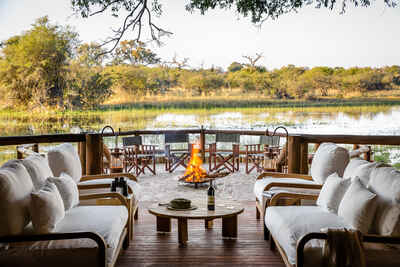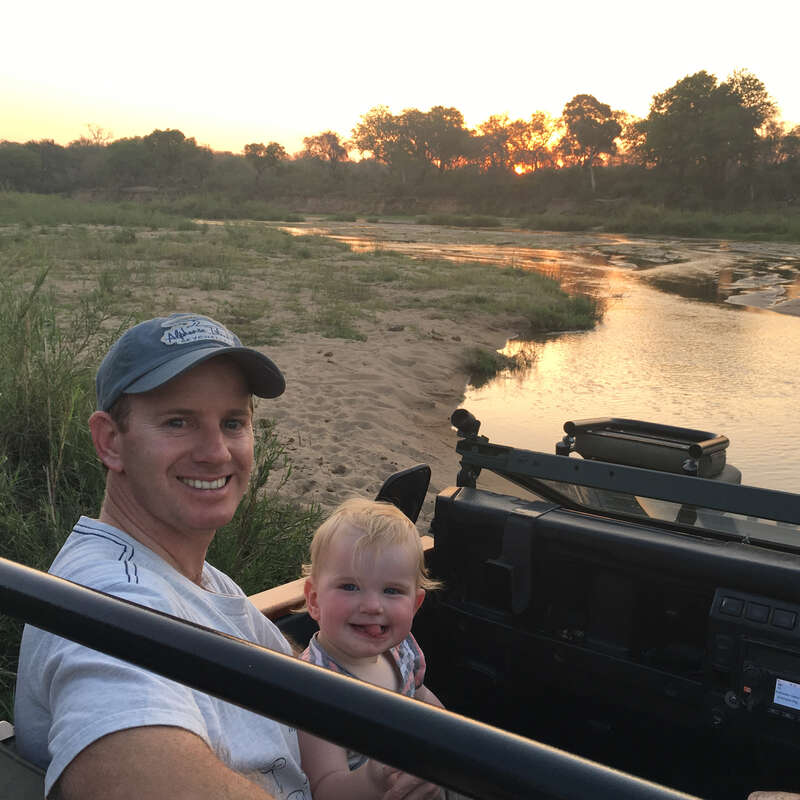About Chief's Camp
Chief's Camp lies within the Moremi Game Reserve's exclusive Mombo Concession, on the north-western side ...
... of Chief's Island – the largest land mass in the Okavango Delta. The island is renowned for some of the best game viewing in Botswana. Between January and May 2016, Chief’s Camp underwent extensive renovations, reopening on 1 June.
The newly renovated Chief’s Camp has a great new design and a fresh, luxurious look. The wildlife in the area definitely lives up to its reputation, and we find the guiding to be quite good. Chief’s does come at a high price tag, but it is well worth it for guests looking for luxury and excellent wildlife.
Our view
The newly renovated Chief’s Camp has a great new design and a fresh, luxurious look. The wildlife in the area definitely lives up to its reputation, and we find the guiding to be quite good. Chief’s does come at a high price tag, but it is well worth it for guests looking for luxury and excellent wildlife.
Accommodation
11 rooms
Children
Best for ages 12+
Open
All year
Activities

4WD Safari

Birdwatching

Helicopter

Mokoro

Private activities
Traveller reviews of Chief's Camp
8 real, un-edited reviews from Expert Africa's travellers.
Arrived 3 Jun 2018, 2 nights
"Luxury in the Delta"
Overall rating: Excellent
Arrived 16 Mar 2018, 3 nights
"Wildlife around every corner!"
Overall rating: Excellent
Arrived 7 Mar 2018, 3 nights
"Chief's Camp review"
Overall rating: Excellent
Arrived 18 Nov 2017, 4 nights
"Chief's Camp review"
Overall rating: Excellent
Arrived 12 Jul 2016, 3 nights
"Good game viewing"
Overall rating: Good
Arrived 28 Mar 2013, 3 nights
"Chiefs Camp review"
Overall rating: Good
Arrived 14 Jun 2010, 3 nights
"exceeded expectations"
Overall rating: Excellent
Arrived 18 Jan 2009, 2 nights
"Great comfort and super game viewing."
Overall rating: Good
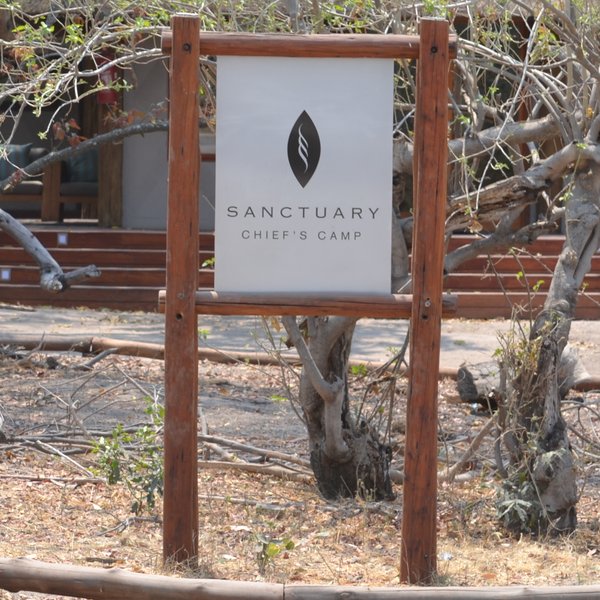
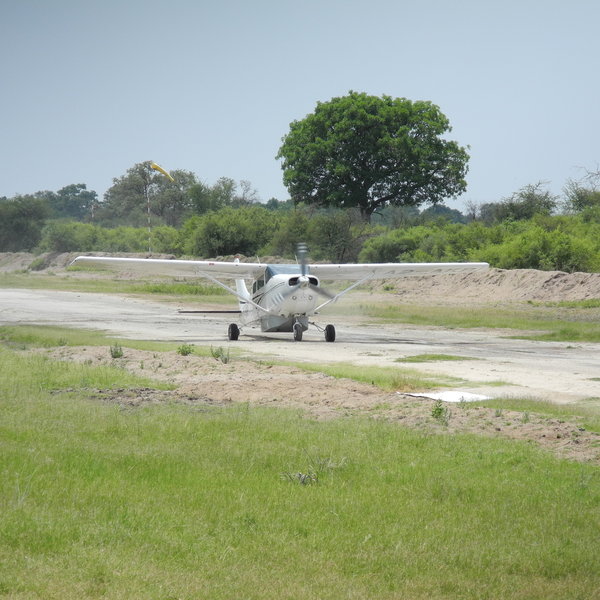
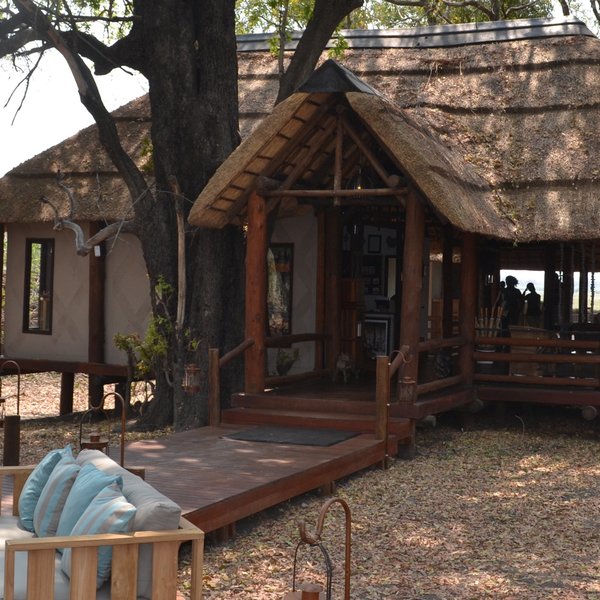
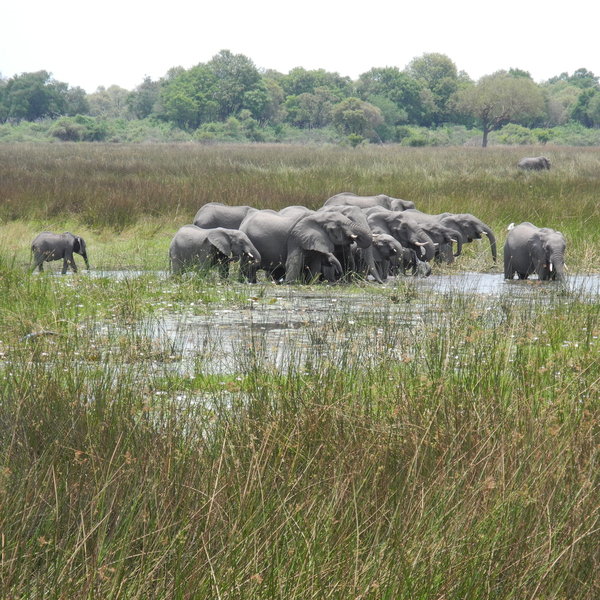
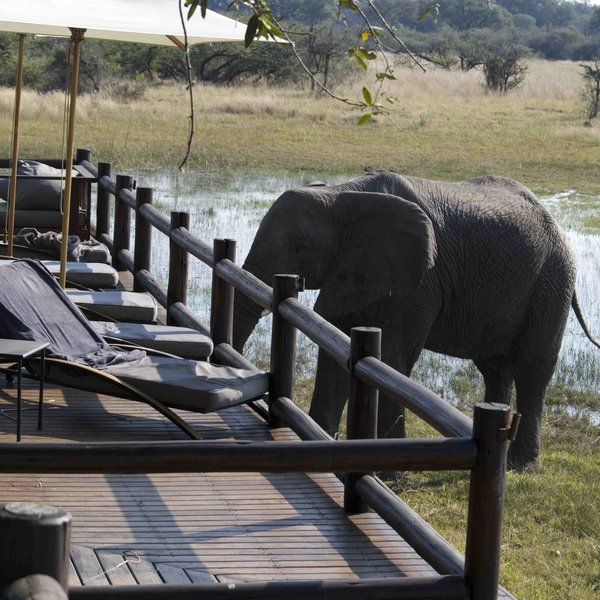
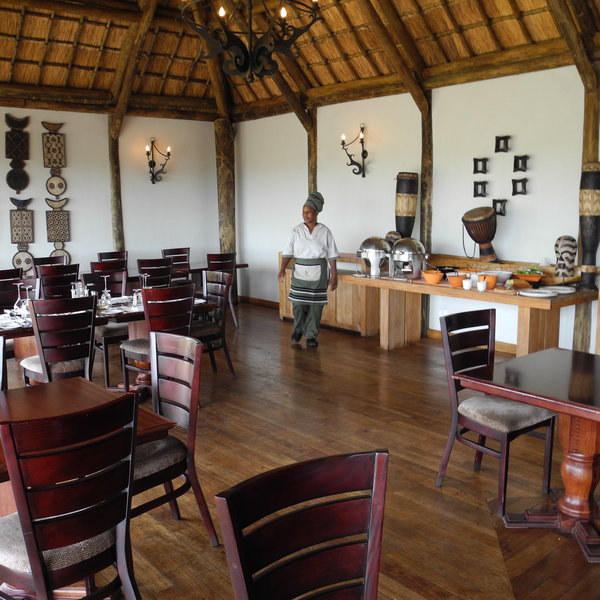
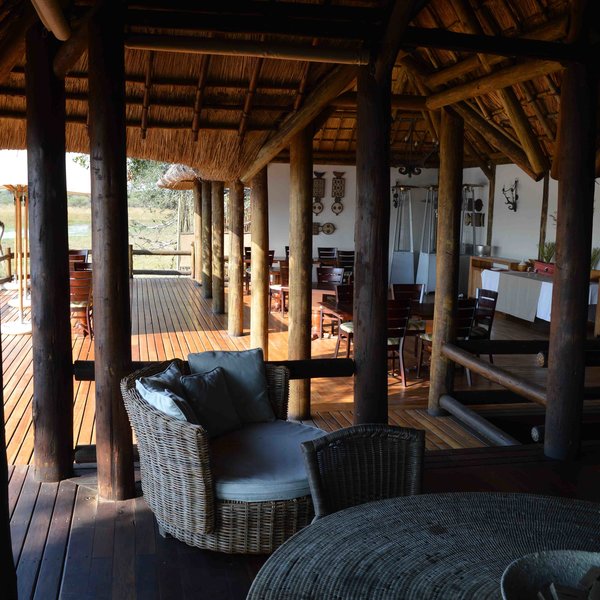
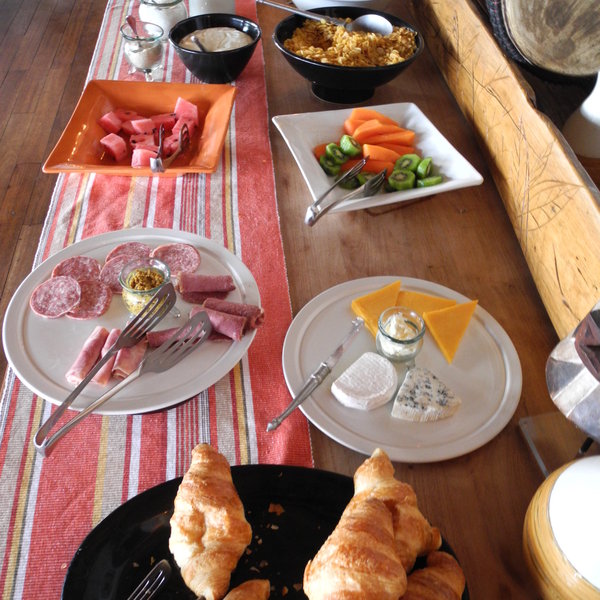
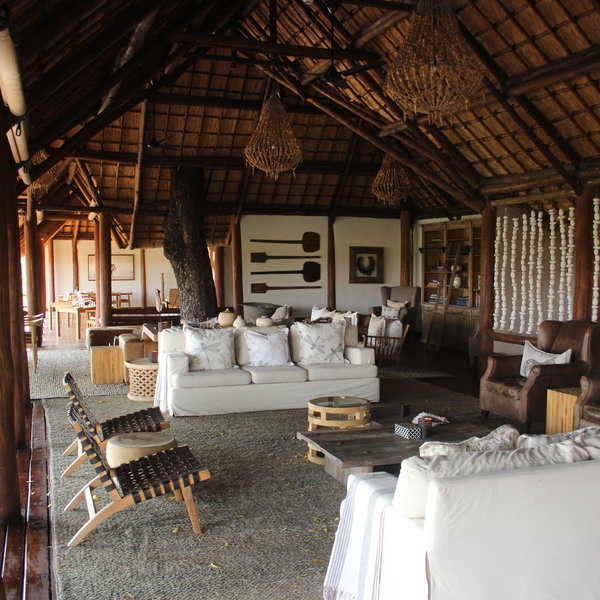
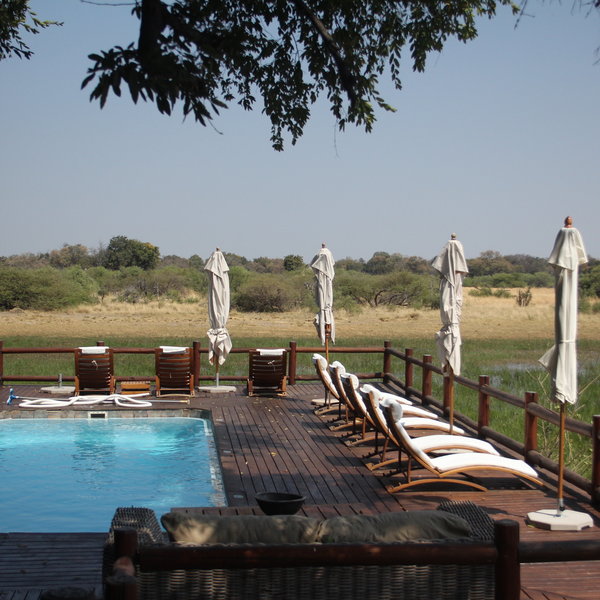
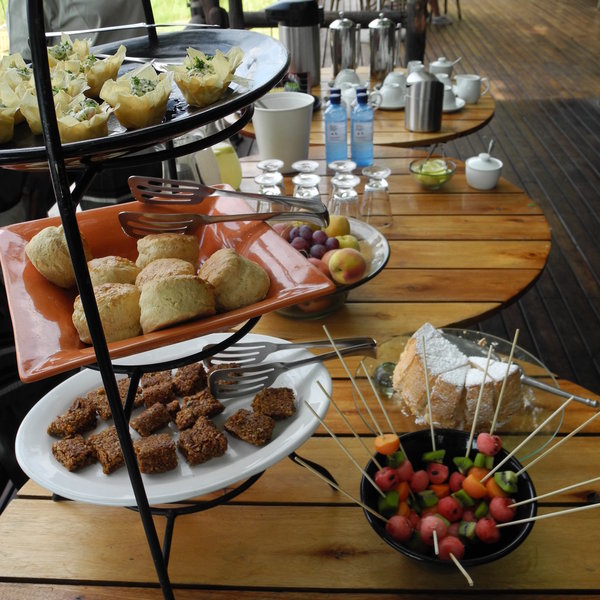
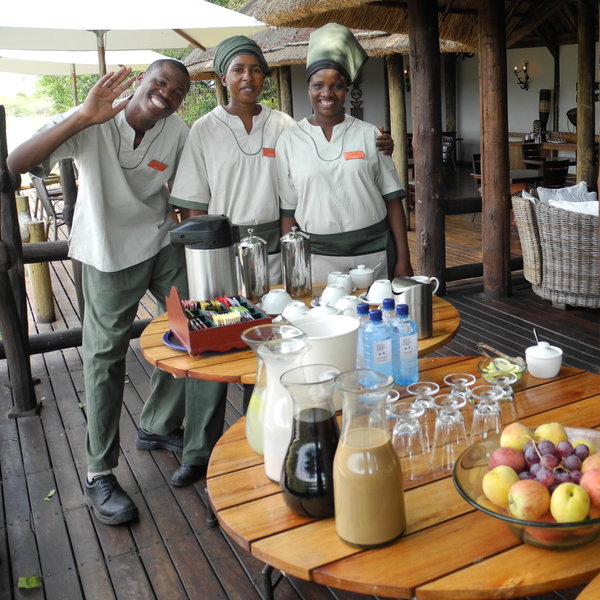
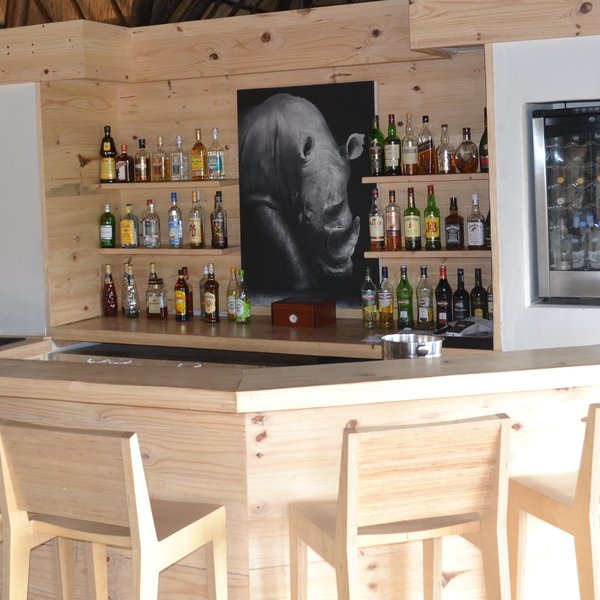
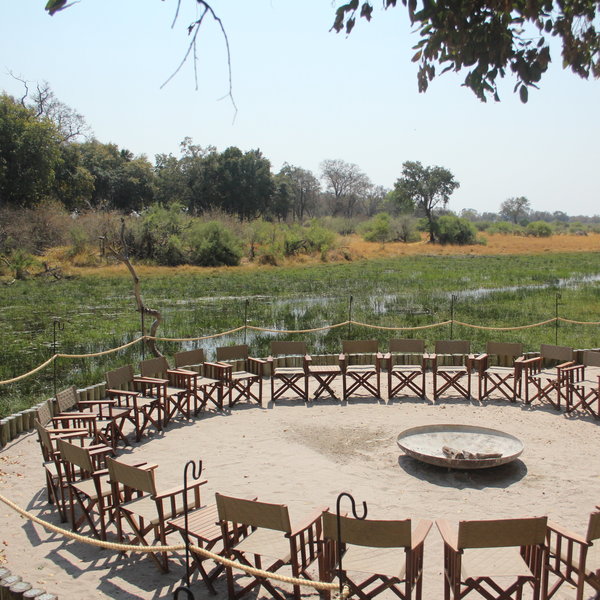
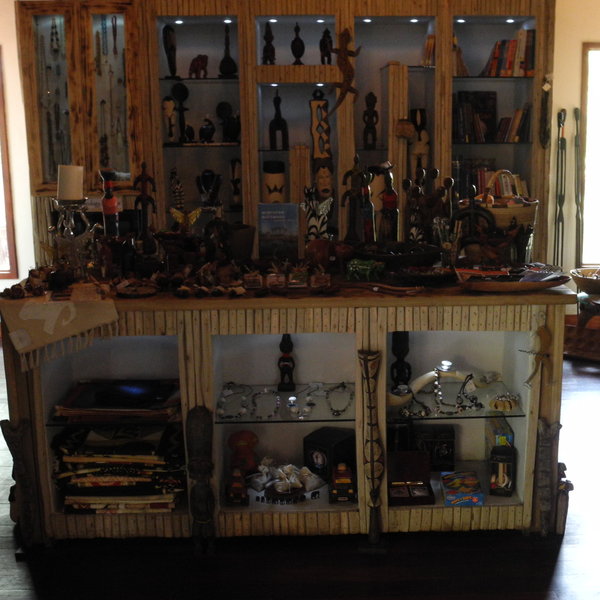
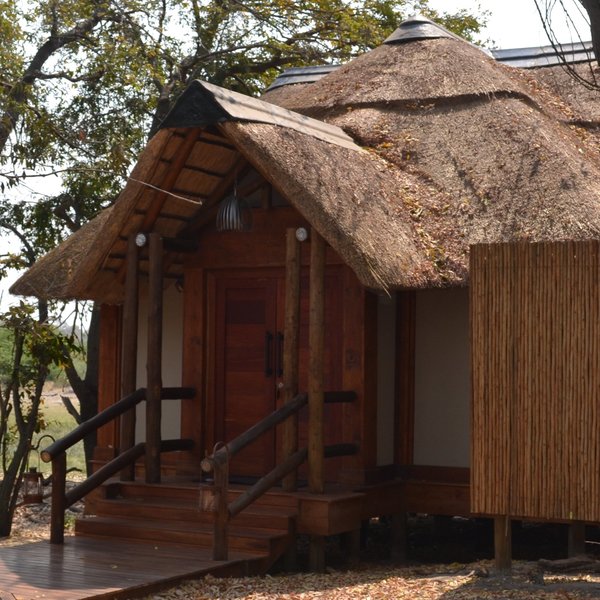
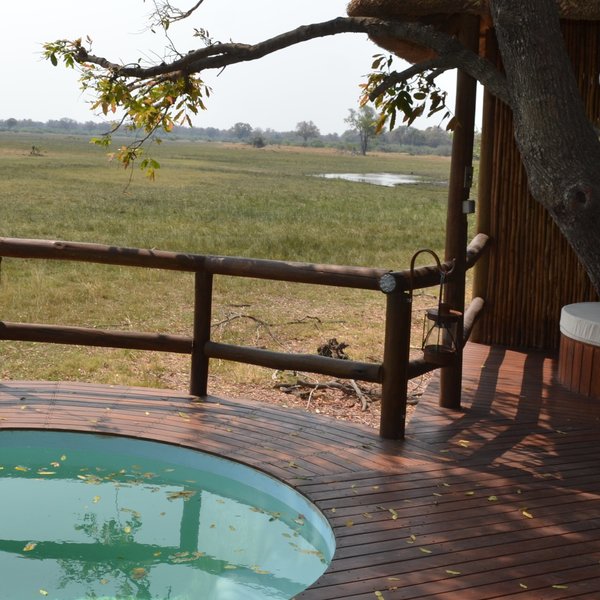
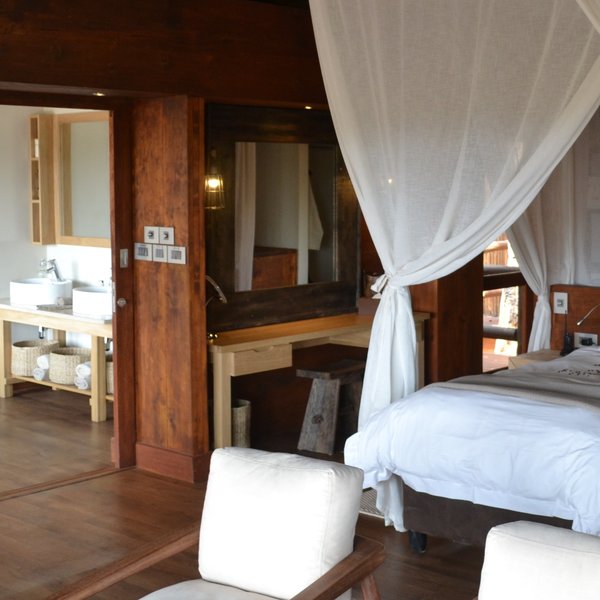
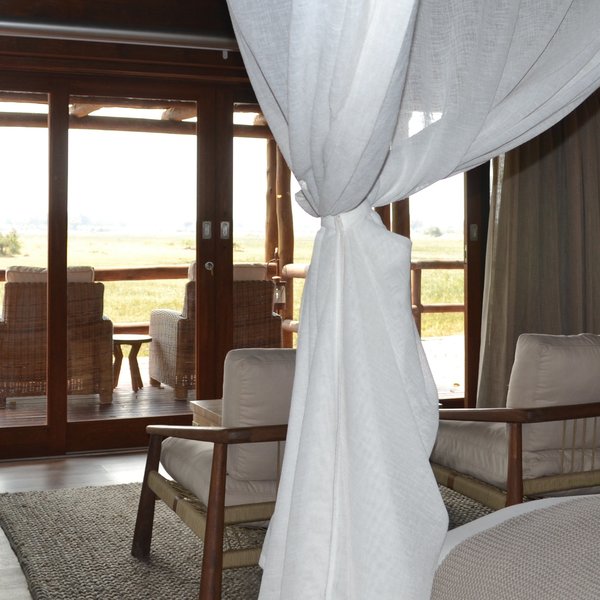
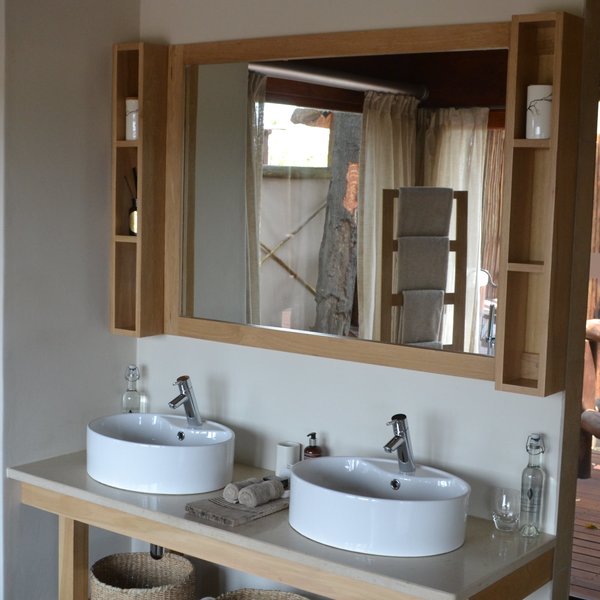
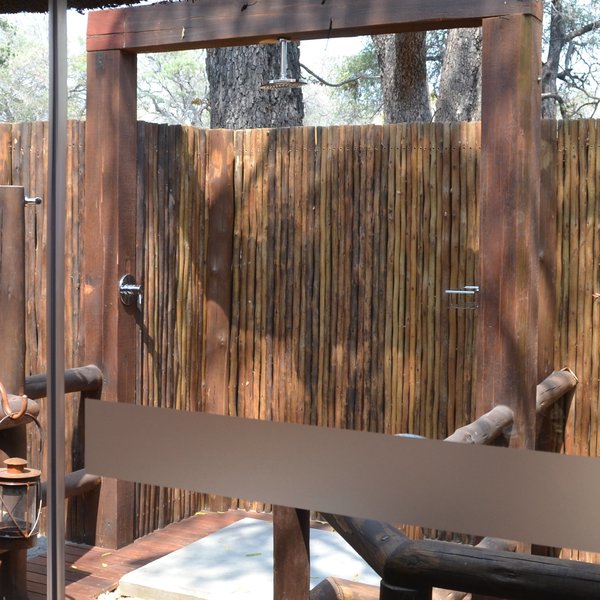
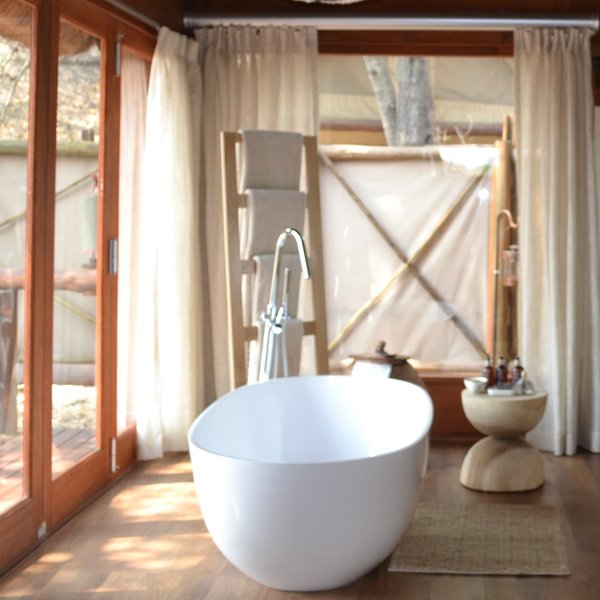
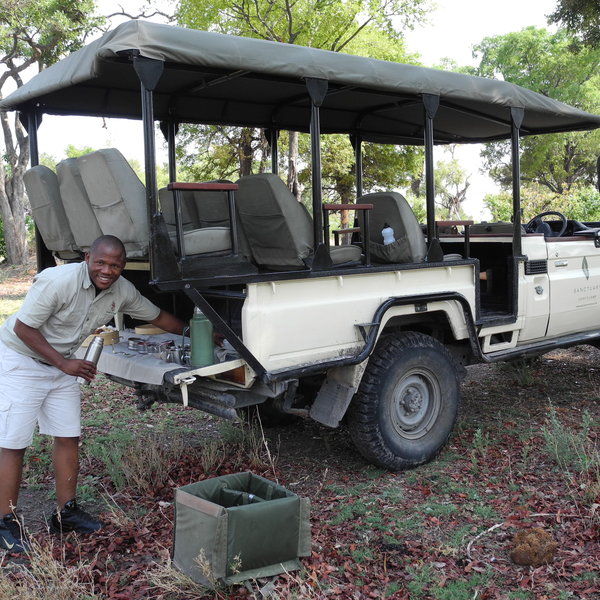
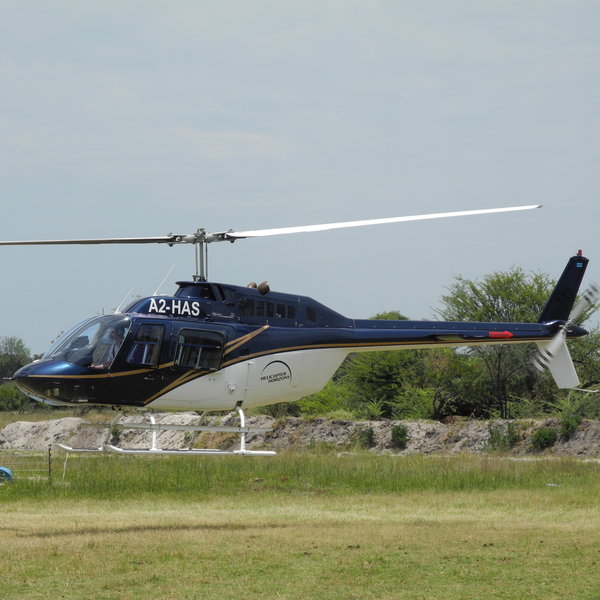
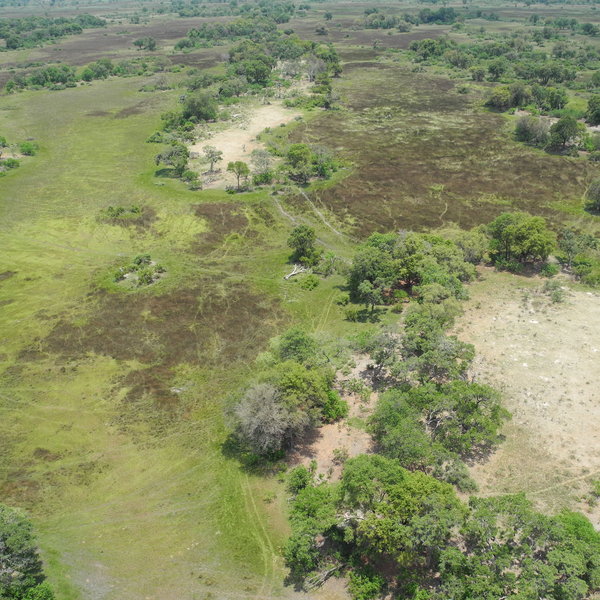
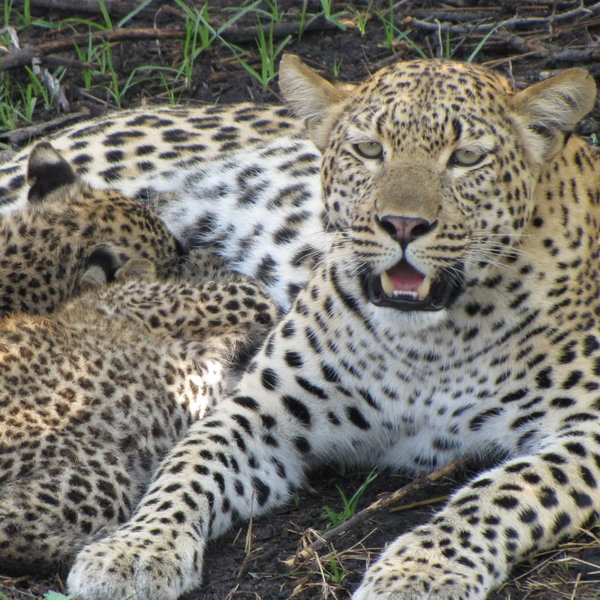
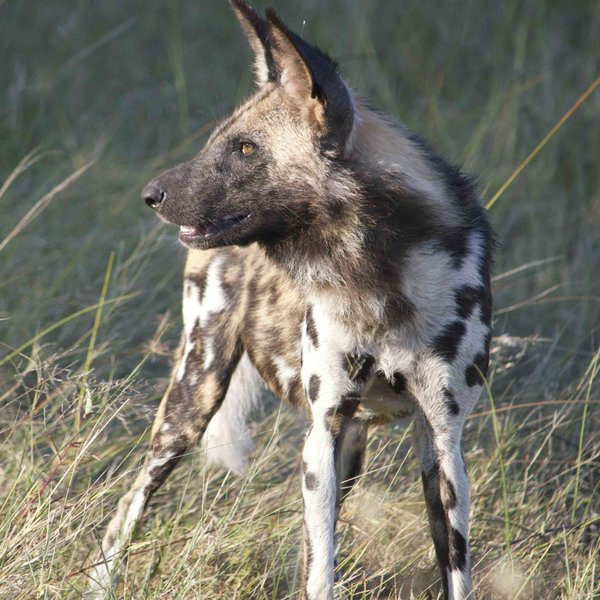
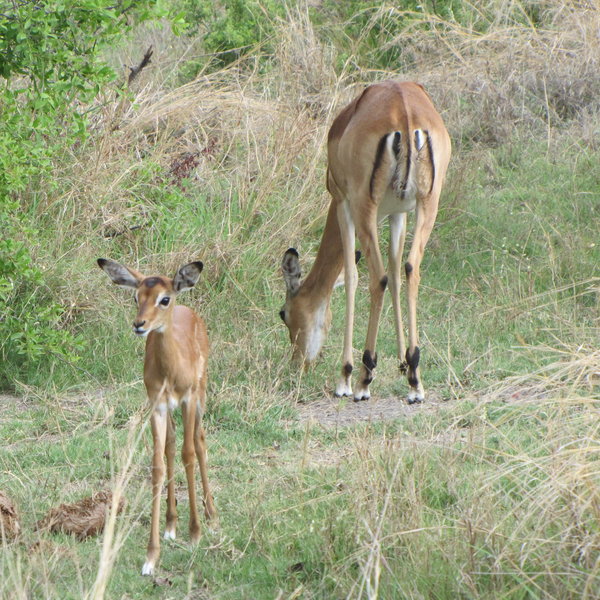
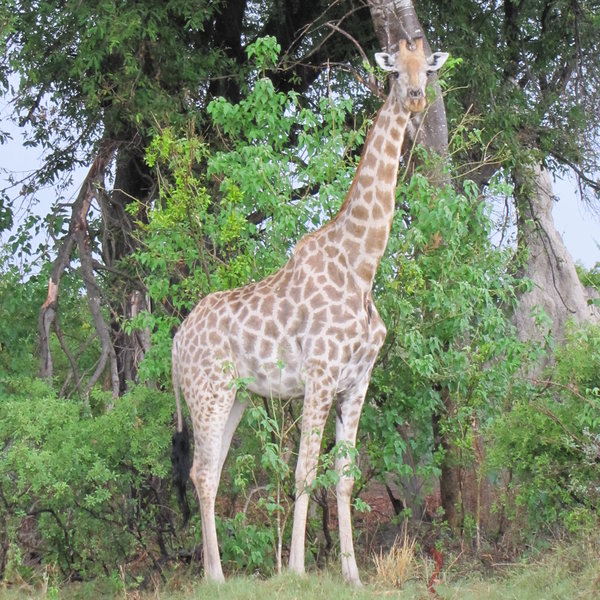
Expert Africa's gallery
When we travel we take lots of photos ourselves to give you a real and un-edited view of the safaris. See our 40 pictures and 1 videos of Chief's Camp to get the candid view.
View galleryChief's Camp: Our full report
Chief's Camp lies within the Moremi Game Reserve's exclusive Mombo Concession, on the north-western side ...
... of Chief's Island – the largest land mass in the Okavango Delta. The island is renowned for some of the best game viewing in Botswana. Between January and May 2016, Chief’s Camp underwent extensive renovations, reopening on 1 June.
We were fortunate enough to stay at Chief's Camp in September 2018, when we were greeted by a welcoming choir and managers. It was quite nice having a rolling safety ladder wheeled directly to our 4WD vehicle, helping guests to get in and out of the back rows. A large raised wooden boardwalk leads into both the camp's main area and an orientation room with a television, couches and library. The latter room, whose walls are covered in beautiful old maps of Africa, can be used for lectures and screening wildlife films, but the large flat-screen TV is not connected to international television. There is also a laptop computer connected to the internet for guest use.
The main area itself features a very nicely stocked curio shop, with local crafts, scarves, clothes, CDs and books, and a reception desk where guests can discuss what activities they would like to do during their stay. The lounge is separated from the reception area by a unique 'wall', whose top section consists of numerous vertical strands of white rock – an impressive feature, creating a very open, airy atmosphere. In the lounge, white upholstered couches sit on either side of a wooden coffee table, with additional seating provided by both leather and thatched chairs. There are stools round the bar, too, which during our visit was a very lively spot for pre-dinner drinks.
Behind the bar is a large swimming pool, with a massive wooden deck set with sunloungers, chairs and tables, all shaded by big canvas umbrellas. Conveniently, there are both men's and women's restrooms here too.
Overlooking the floodplain is a nice seating area with large thatched cushioned chairs and tables. This is where guests typically enjoy high tea with their guides before their afternoon activity.
Steps from the seating area lead down to an outdoor boma with numerous folding canvas chairs and a small open firepit. On weekly 'traditional' nights, guests dine under the stars at the boma – an experience that we were treated to on our last visit.
Most meals, however, are taken in the dining room, against the backdrop of a beautiful black-and-white photograph of a leopard, and an old-fashioned clay pizza oven. Guests are served at individual wooden tables
Beyond the main area, Chief's Camp is divided in two. To the west are the spa, six rooms, and a children's retreat, while to the east are the fitness centre, a further four rooms, and the Geoffrey Kent Suite. Accommodation options total 10 bush pavilions and one two-bedroom suite.
The camp's ten newly renovated luxury bush pavilions are indeed quite chic. Each is set on a raised wooden platform reached by two steps. Two wooden doors open up to a foyer where a wooden wall with a big open window features the camp's hallmark vertical strands of white rocks. Here you'll find a set of shelves with a coffee maker, kettle, biscuits, and several different teas and coffees, as well as a tray with an ice bucket and small bottles of gin, vodka and brandy, a bottle of red wine, a decanter of sherry, and both cocktail and wine glasses. There's also a stocked minibar.
Inside the bedroom, the large double bed is topped with tasteful cushions and beige throw blankets. Two wooden cushioned chairs with a small table form a sitting area that faces the deck, and the adjacent writing desk, set beneath a screened window, has a charging station with multiple international plugs and a USB wire), and a lamp. A massive vanity desk with enormous mirror, and a large walk-in closet, complete the picture, the latter incorporating a large safe, bug spray, and insect repellant – and a door that leads into the outdoor shower.
Separated from the bedroom by a sliding wooden door, the bathrooms are bright and open, lit by both natural light and an oval-shaped chandelier made up of the iconic Chief's Camp hanging white rock strands. The centrepiece of each bathroom is a big white free-standing bathtub complete with Africology toiletries. A wooden counter with dual white washbasins separates the bathroom from a large stone-walled indoor rain shower. A glass door opens up to reveal a large wooden deck and a marble slab surrounded by white rocks, which serves as an outside shower, with privacy provided by thatched walls.
Glass doors from both the bathroom and the bedroom lead out onto a substantial outdoor deck, with three sitting areas: one where private meals can be arranged; a second with chairs overlooking the floodplain and a circular plunge pool; and a third where there's a daybed with throw pillows where guests can relax and enjoy lovely views of the floodplains.
At the furthest eastern point of the camp lies the massive two-bedroom Geoffrey Kent Suite, whose interconnected rooms can be booked for up to six people or – in the case of the 'Mini Suite' – as a stand-alone option.
The bedrooms and bathrooms here are more or less identical to those in the luxury bush suites, each with a plunge pool , a daybed, seating area, and a table for private dining. The big difference is that the 'Mini Suite' has a private prep kitchen, a large bar with four bar stools, and an indoor lounge that opens up to a covered deck and on to a sand boma and firepit. It's this that makes the Geoffrey Kent Suite special, especially for entertaining a small group of people, whether it be a family or two couples.
Photos of safari pioneer Geoffrey Kent posing with various celebrities feature on one side of each room, and floor-to-ceiling glass windows overlook a large deck on the other. This deck is used only when both rooms are booked as access is from a canvas screen wall.
The suite is reached from the main area via the same dirt path as the fitness centre and four of the rooms, but towards the end the path turns into a raised wooden boardwalk, giving a feeling of exclusivity. It has its own private entrance and its own staff – guide, chef, butler and housekeeper –,as well as a private guide and vehicle, and can be considered a separate entity from the camp itself. That said, guests here are welcome to use the main area of Chief's Camp as well as its various amenities.
In the fitness centre, we were impressed by the layout and equipment: two treadmills, a spin bike, an extensive rack of dumbbells and an adjustable exercise bench. There are good storage and shower facilities here, too.
At the far end of the path from the main area in the opposite direction is the spa. Treatments, which use Africology amenities and products, can be arranged either in one of the spa's treatment rooms or pool side, subject to availability.
An enormous hit with youngsters is the children's retreat, kitted out with table football table, colouring books, shelves of puzzles, games and books and a small teepee. In keeping with the location, there are also several microscopes with samples of bugs and leaves to observe. Arguably top of the attractions for children are a black light room where they can draw on the walls with glow-in-the-dark markers, and a TV connected to a PlayStation 4 surrounded by five comfortable bean bags!
Activities at Chief's Camp focus on 4WD game drives and, subject to water levels, mokoro excursions. Game drives allow guests to experience the island's varied terrain and generally prolific wildlife – including an array of bird species – although Chief's Camp's location within the Moremi Game Reserve means that game drives are restricted by national-park regulations, which prohibit off-roading, night drives and walking.
A maximum of six guests on the open-sided vehicles affords everyone an outside seat, though groups of up to nine travelling together and wanting to be in one vehicle can be accommodated. The vehicles have good legroom and comfortable armrests, and the guiding is good. On our last visit we noticed that the seat covers were brand new with smart Chief's Camp logos embroidered on each one.
Regular sightings on game drives include elephant, lion, giraffe, vervet monkey, leopard, spotted hyena, a variety of antelope, zebra, baboon, buffalo and wild dog. We enjoyed very good game viewing on out last visit, including a small pride of lions consisting of 3 females and 4 cubs, and a very playful group of wild dog puppies which were being looked after by 2 adults whilst the rest of the pack were out hunting. As well as these two predator sightings the general game was plentiful and the birdlife was great.
Chief's Island was the location for the release of most of the rhino that have been reintroduced into Botswana in the last decade or so. Although a fair number have stayed around this area (with the rest having spread out over central and northern Botswana), and the island still offers one of Botswana's best chances of spotting rhino, they remain elusive and rarely seen. This was borne out on our last visit, when we did spot black rhino tracks but none of the resident rhino population.
The peak season for mokoro trips at Chief's Camp is between approximately May and October. Mokoros are not available in January and February, while at other times, water levels are dependent on the rains and the timing of the annual flood. On past visits, water levels prevented us taking out a mokoro, and although during a previous stay in October mokoro activities were available, we chose to focus on game drives due to the superb quality of big game in the area! When the water is high, mokoro trips start from in front of the lodge and offer a slightly later start than game drives, ideal for those wanting a bit of a lie-in.
At extra cost are helicopter flights soaring above the heart of the Delta and Chief's Island.
Activities
4WD Safari
Birdwatching
Helicopter
Mokoro
Private activities
Families & children
- Attitude towards children
- Children aged six years and over are welcome at Chief's Camp, but note that children aged 6–11 years are permitted on activities only at the discretion of the camp managers. A private vehicle can be arranged for families (at extra cost and subject to availability).
- Property’s age restrictions
- Minimum age 6 years
- Special activities & services
- The children’s retreat will be a huge hit with families with small children.
- Equipment
- The Geoffrey Kent Suite can easily accommodate small children, especially if both rooms are booked. The main Chief’s Camp has no family room, although a rollaway bed can be added to create a triple room (though note that the camp can accommodate only one triple room at a time). Families with two children could alternatively take two rooms with one adult and one child in each. No special equipment is provided for children.
- Generally recommended for children
- We would recommend Chief's Camp for children aged 12 and over who have a genuine interest in wildlife.
- Notes
- Chief's Camp is unfenced within a big-game area, so children must be under their parents' supervision at all times.
Food & drink
- Usual board basis
- Full Board & Activities
- Food quality
- The food has been very good on our many visits to Chief's Camp, and our last visit, in September 2018, was no exception. Meals were fresh, tasty, well presented and of a very high standard. With advance notice, the camp can cater for vegetarians and other dietary requirements.
Unlike most camps in Botswana, lunch and dinner are served at individual tables rather then at a communal dining table.
Breakfast is served before the morning activity. We helped ourselves from a continental buffet of cereals, yoghurt, fresh fruit, cold meats, cheeses and croissants. A cooked breakfast was made to order, with a variety of options.
We arrived in time for lunch on our last visit, along with a wide selection of salads from the buffet including lettuce, feta, chickpeas, cucumber, olives, tomatoes, as well as homemade bread. The head chef was standing by with a Moroccan themed seleciton of fillers including homemade hummous, falafels which could be combined with a chicken or beef filling for a home made wrap.
Afternoon tea was served at 3:30, half an hour before our gamedrive. In addition to a very tasty chocolate cake, there were small brushettas topped with brie, honey and nuts. Drinks included hot or iced tea, coffee and lemonade.
Dinner was a traditional local meal served buffet style to guests seated around private dining tables in the sand boma. Following a creamy parsnip soup we were offered a selection of pounded beef (seswaa), grilled chicken, Kudu sausage, local bream and goat chops which could be accompanied by pap (a local version of polenta), baked potato, stewed vegetables, rice, and corn on the cob. Dessert was a very rich chocolate cake. - Dining style
- Mixture of group dining and individual tables
- Dining locations
- Indoor and Outdoor Dining
- Further dining info, including room service
- Private meals can be arranged by the pool or on your room deck.
- Drinks included
- Bottled water, soft drinks, local beers, spirits and a limited selection of (usually) South African red and white wines are included. Premier champagne and premium imported brands will cost extra and must be requested well in advance.
Each room is provided with glasses and a flask of filtered drinking water, which is replenished daily. We don't recommend that travellers drink from the tap.
Our travellers’ wildlife sightings from Chief's Camp
Since mid-2018, many of our travellers who stayed at Chief's Camp have kindly recorded their wildlife sightings and shared them with us. The results are below. Click an animal to see more, and here to see more on our methodology.

100% success

100% success

100% success

100% success

100% success

100% success

100% success

0% success

0% success

0% success

0% success

0% success

0% success

0% success

0% success
Getting there
- Location
- Moremi Game Reserve, Botswana
- Ideal length of stay
- Most guests stay for two or three nights, though given the game-viewing opportunities on Chief's Island we'd ideally recommend three nights – particularly during the annual flood (June–October), when both game drives and mokoro trips are available.
- Directions
- Chief's Camp is reached by light aircraft into Piajio airstrip – a 25-minute flight from Maun or 1½ hours from Kasane. The airstrip is about 25 minutes' drive from camp, depending on what you see along the way.
- Accessible by
- Fly-and-Transfer
Special interests
- Birdwatching safaris
- The diverse habitats around Chief's Camp attract over 450 bird species, from waterbirds to woodland varieties. Mokoro excursions offer close appraoches to African jacana and pied kingfisher, whilst woodland species are seen on 4WD activities.
- See ideas for Birdwatching safaris in Botswana
- Wildlife safaris
- Renowned as one of Botswana's premier game-viewing destinations, Chief's Island boasts a wide variety of wildlife – including the country's few rhino (although these are rarely seen).
- See ideas for Wildlife safaris in Botswana
- Luxury safaris
- Located in an area renowned for superb game viewing, Chief’s Camp was completely renovated in 2016. The enormous suites are opulent, with private plunge pool, air conditioning, and large bathtub. There is also a spa, for a little extra spoiling during your luxury safari holiday.
- See ideas for Luxury safaris in Botswana
Sustainability
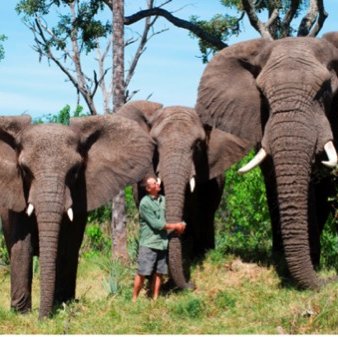
Sanctuary Elephant and Rhino Conservation Project
As a member of Sanctuary Retreats, Chief’s Camp is involved in the promotion and implementation of the elephant and rhino conservation projects in Botswana, which are sponsored by the group. The project aims to build long lasting relationships with rural communities in order to encourage the protection of the indigenous wildlife.
The elephant conservation project offers a two-day workshop to local children where they can play games, learn about and discuss the importance of conservancy, and interact with elephants themselves. In doing so the project aims to mitigate the conflict between humans and elephants who are currently being hunted as a result of them affecting the local community’s harvests. This information can then be passed down to future generations ensuring that the species continue to coexist.
The rhino conservation project in Botswana has been responsible for the relocation of a number of rhinos to the Botswana Moremi Reserve. Unfortunately, Rhinos are targeted by poachers for their horns and at current rates will be extinct by 2036. The project helps to locate and monitor rhinos and, when possible, relocate them to the reserve. Within the boundaries of the reserve the rhino population is able to thrive, protected from poaching. This work is especially important for the black rhino population whose numbers are dwindling. The project is taking a stand against poaching to protect the animals before it is too late.
See more great sustainability projects in Botswana
Communications
- Power supply notes
- Chief's Camp has a back-up generator. There are 220-volt power points in the rooms, with universal plug sockets and USB charging ports.
- Communications
- Complimentary WiFi access is available in each tented room (though don't expect high speeds). There is no direct telephone line or cellphone reception. A satellite phone is used in emergencies.
- TV & radio
- No
- Water supply
- Borehole
- Water supply notes
- All the chalets have plumbed hot and cold running water for showers and flushing toilets.
Health & safety
- Malarial protection recommended
- Yes
- Medical care
- The camp managers and guides are trained in first aid and a comprehensive first-aid kit is kept in camp. Sanctuary Retreats has an on-call nurse who can be flown in to provide medical treatment, or medical evacuation can be arranged in an emergency. Please note that it is only possible to fly out of camp during daylight hours as the bush airstrips do not have any lighting at night.
- Dangerous animals
- High Risk
- Security measures
- There is no fencing around Chief's Camp to prevent potentially dangerous wildlife passing through, so guests are escorted to their rooms after dark. An air-horn and two-way radio are provided in each room to summon attention in case of an emergency.
- Fire safety
- There are fire extinguishers in all the rooms and the common areas at Chief's Camp.
Useful info
- Disabled access
- Not Possible
- Laundry facilities
- A full laundry service is included at Chief's Camp and usually takes less than 24 hours.
- Money
- There is a digital safe in each of the suites.
- Accepted payment on location
- All extras can be paid for with Visa and MasterCard, travellers' cheques or by cash (South African rand, British pounds, US dollars, euros and Botswana pula). Diners Card and American Express are not accepted.
Plan and book your trip with Expert Africa
All of our trips are tailor-made, so we'll always adapt them to suit you. Talk to an Expert and let us plan and arrange your perfect trip.

Talk to an Expert
Call or email us now! We’ll match you with the Specialist in our team who is best suited to help you. Then together we can start planning your trip.

Set up your itinerary
Based on our experience and your ideas, your specialist will create a detailed, costed itinerary. We’ll refine it together, until we have a trip that you’re perfectly happy with.

Prepare for your trip
The same Specialist will make the seamless arrangements for your trip, send you detailed travel documents, and be available to answer any questions before you depart.

Travel with peace of mind
After you set off, you’ll be cared for by our partners in Africa, most of whom have worked with Expert Africa for decades. And if you ever need us urgently, we’re available 24/7.

When you return
We love to learn about your trip, and so will always be grateful if you’ve the time to give feedback to your Specialist when you return.
Chief's Camp's location
Look closer at the environment and surroundings of Chief's Camp.
Excursions from Chief's Camp
Optional extra day-trips and excursions possible whilst you're staying at Chief's Camp. Talk to us: these are usually best arranged before you go.
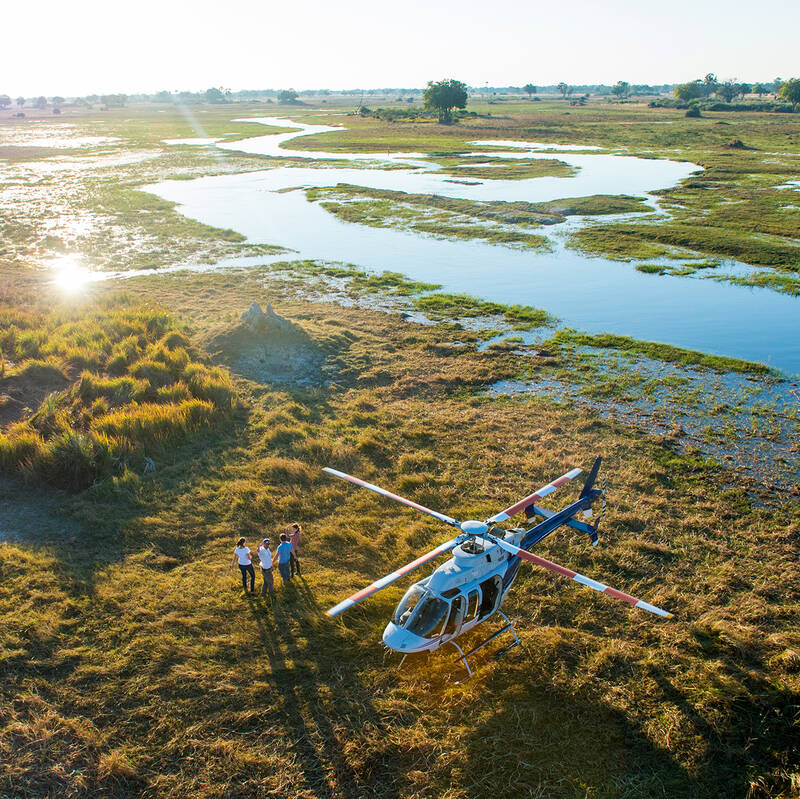
Helicopter Flight - Botswana
Various: from 30 minutes to half a day.
Low-flying, agile and offering superb views, helicopters are an ideal way to move around the Okavango Delta.You can use them instead of fixed-wing inter-lodge transfers or as an addition to other wildlife watching activities, and of course, helicopters can hover to allow that perfect pic, whereas fixed-wings can’t.
More about Helicopter FlightOther lodges in Moremi Game Reserve
Alternative places to stay in this same area.
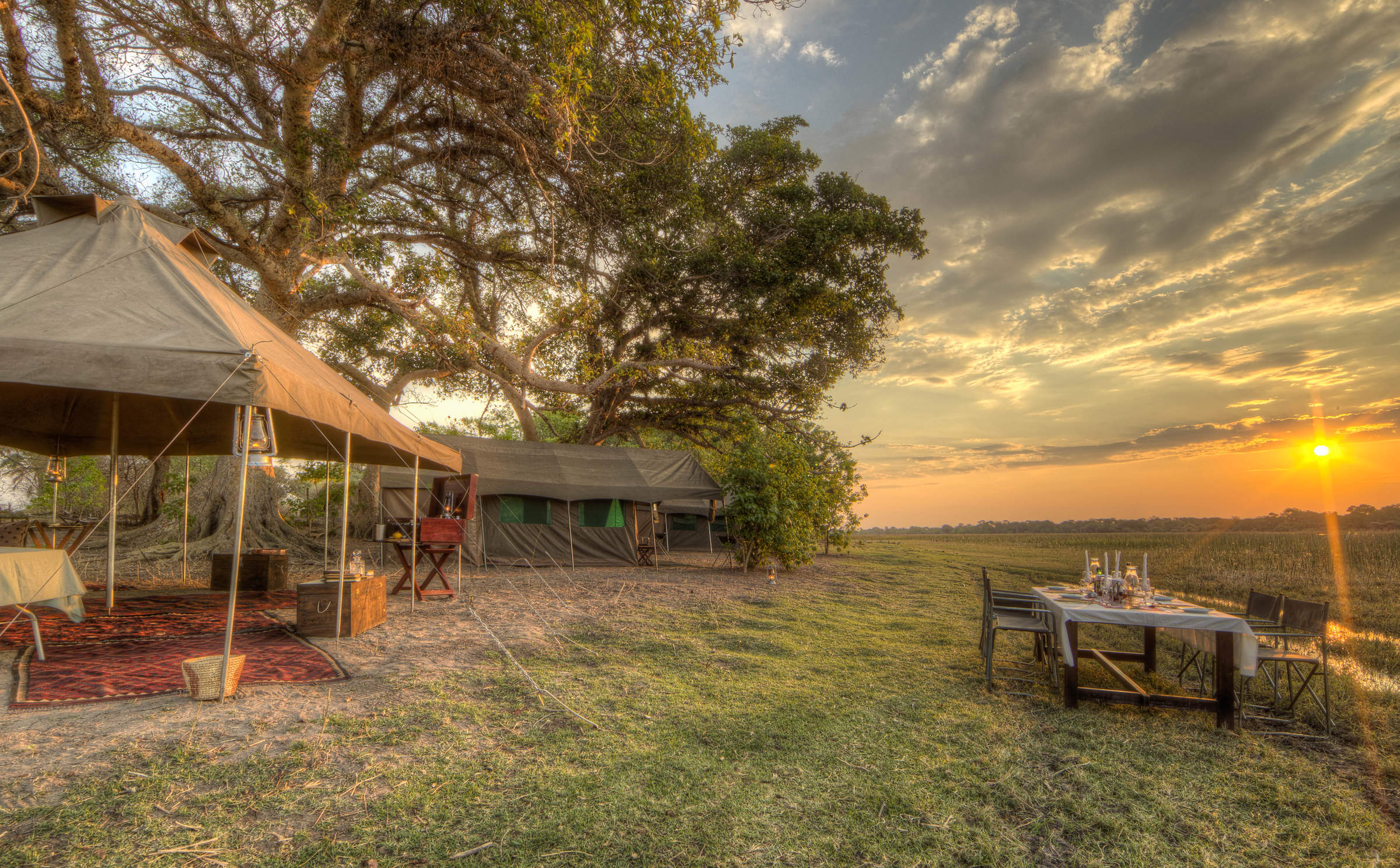
Private Mobile
The Botswana Private Mobile Safari has no fixed location; it's exclusive to your group and comes with a top professional guide. Expect comfortable camping, great food, and a superb wildlife experience wherever you decide to go.
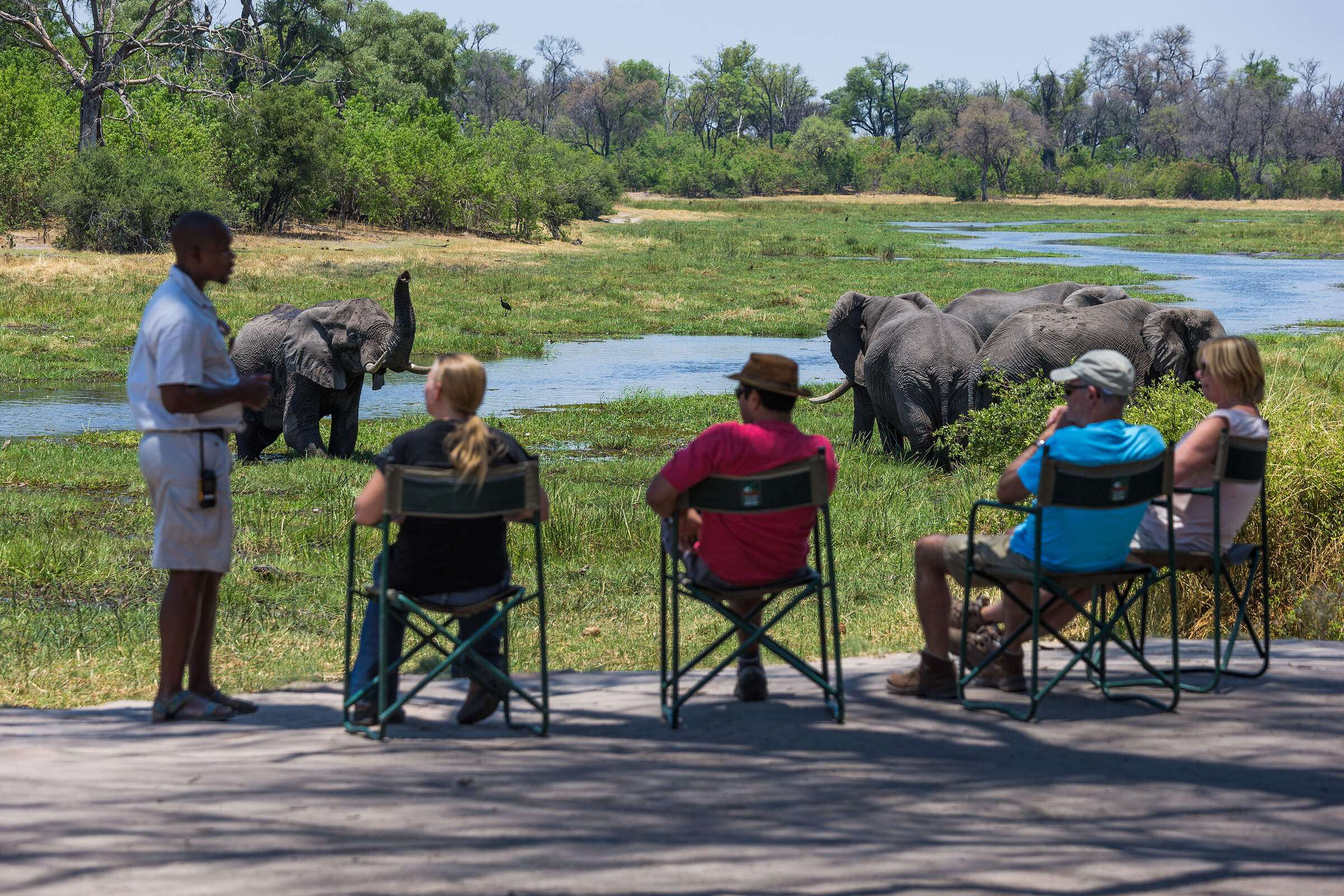
Machaba Camp
Overlooking the Khwai River to Moremi Game Reserve beyond, the classic Machaba Camp combines comfort with excellent game viewing.
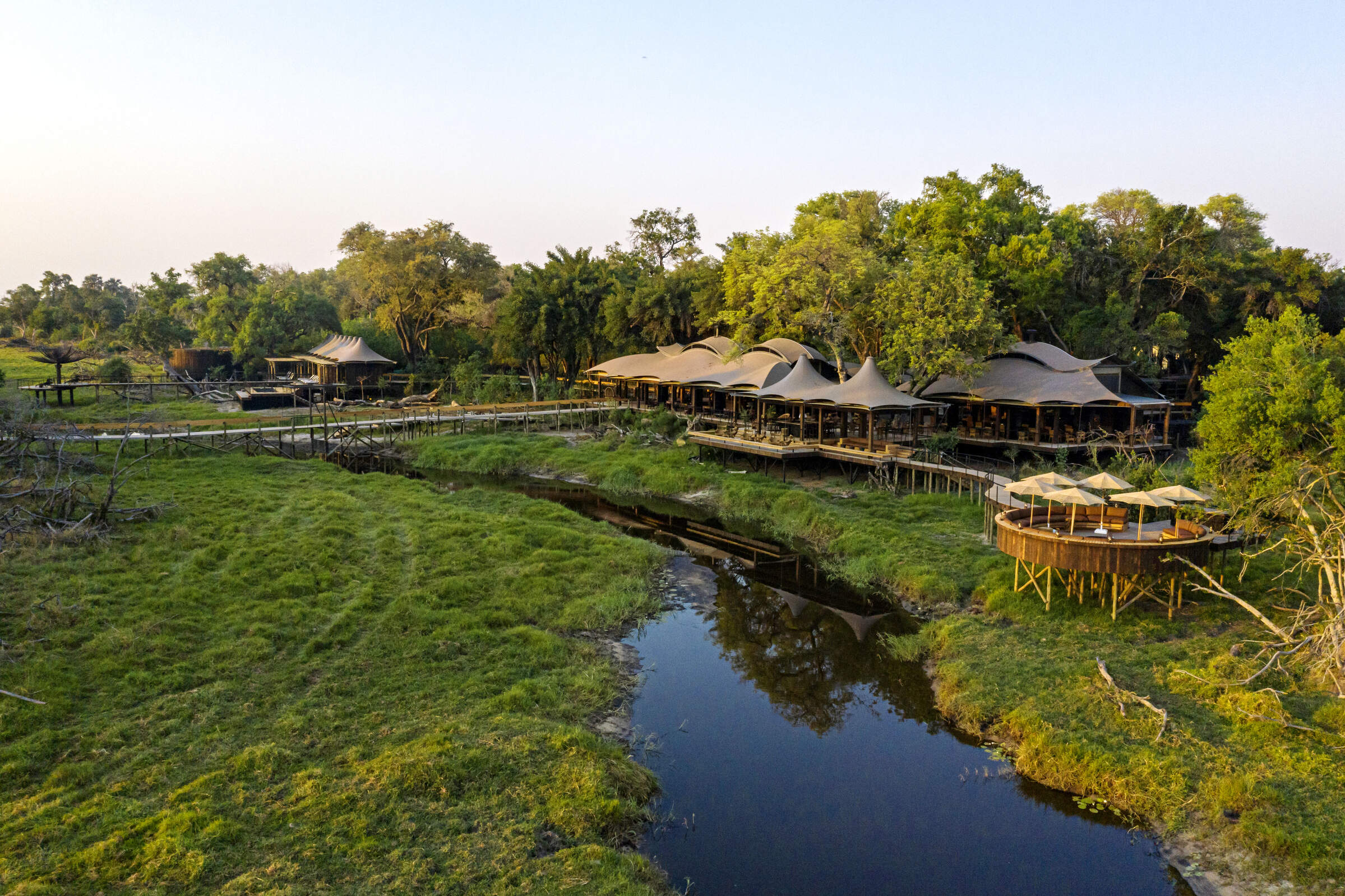
Xigera Safari Lodge
Located deep in Botswana's Okavango Delta, Xigera Camp normally focuses on mokoro excursions and motorboat trips, with 4WD game drives when water levels permit.
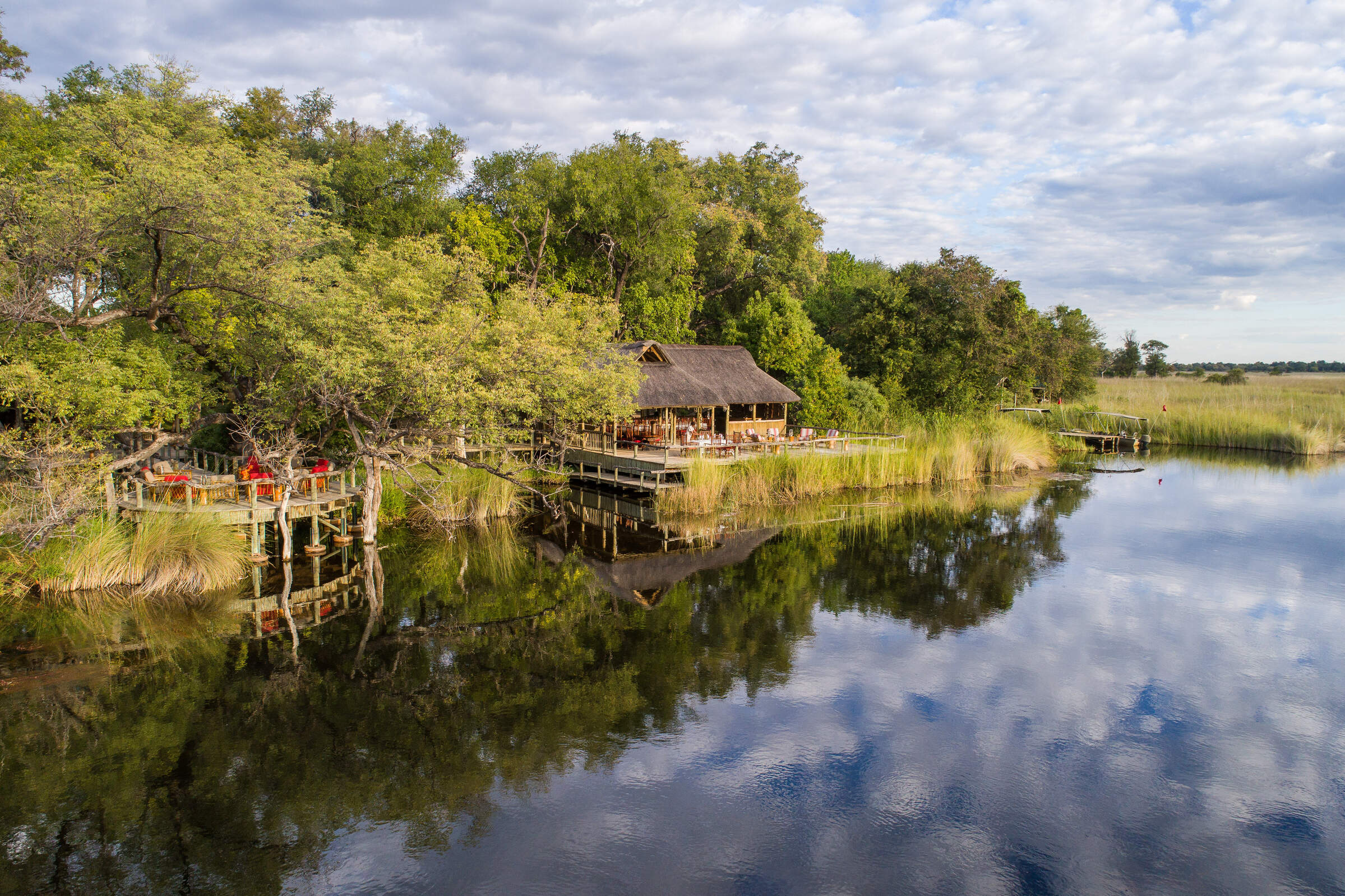
Xakanaxa
Camp Xakanaxa is a well-established traditional camp beside a huge lagoon within the Moremi Game Reserve, with access to some superb wildlife viewing.
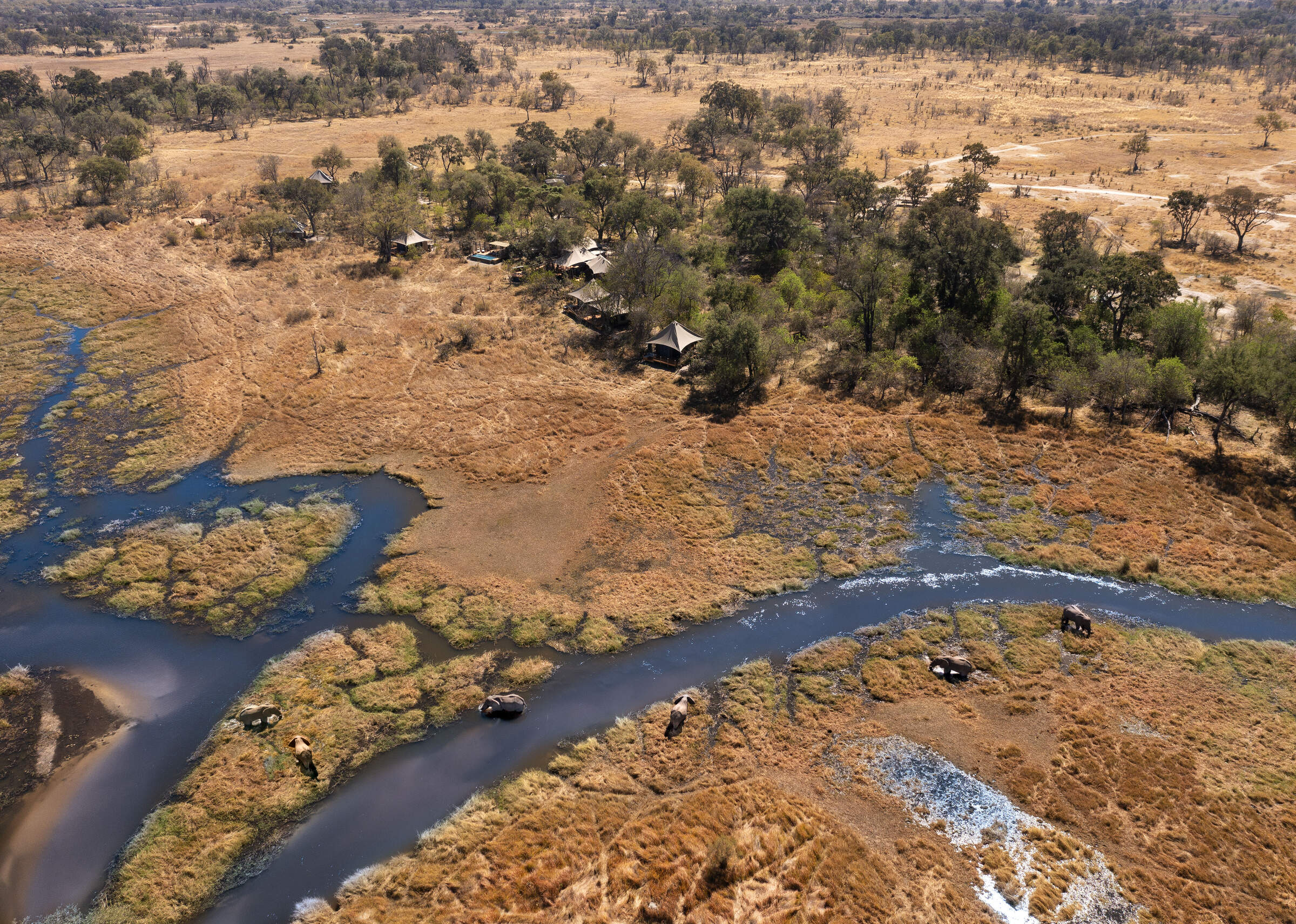
Khwai Lediba
Khwai Lediba offers a traditional African safari experience, with very comfortable tented accommodation, in a fantastic game area north of the Moremi Game Reserve.
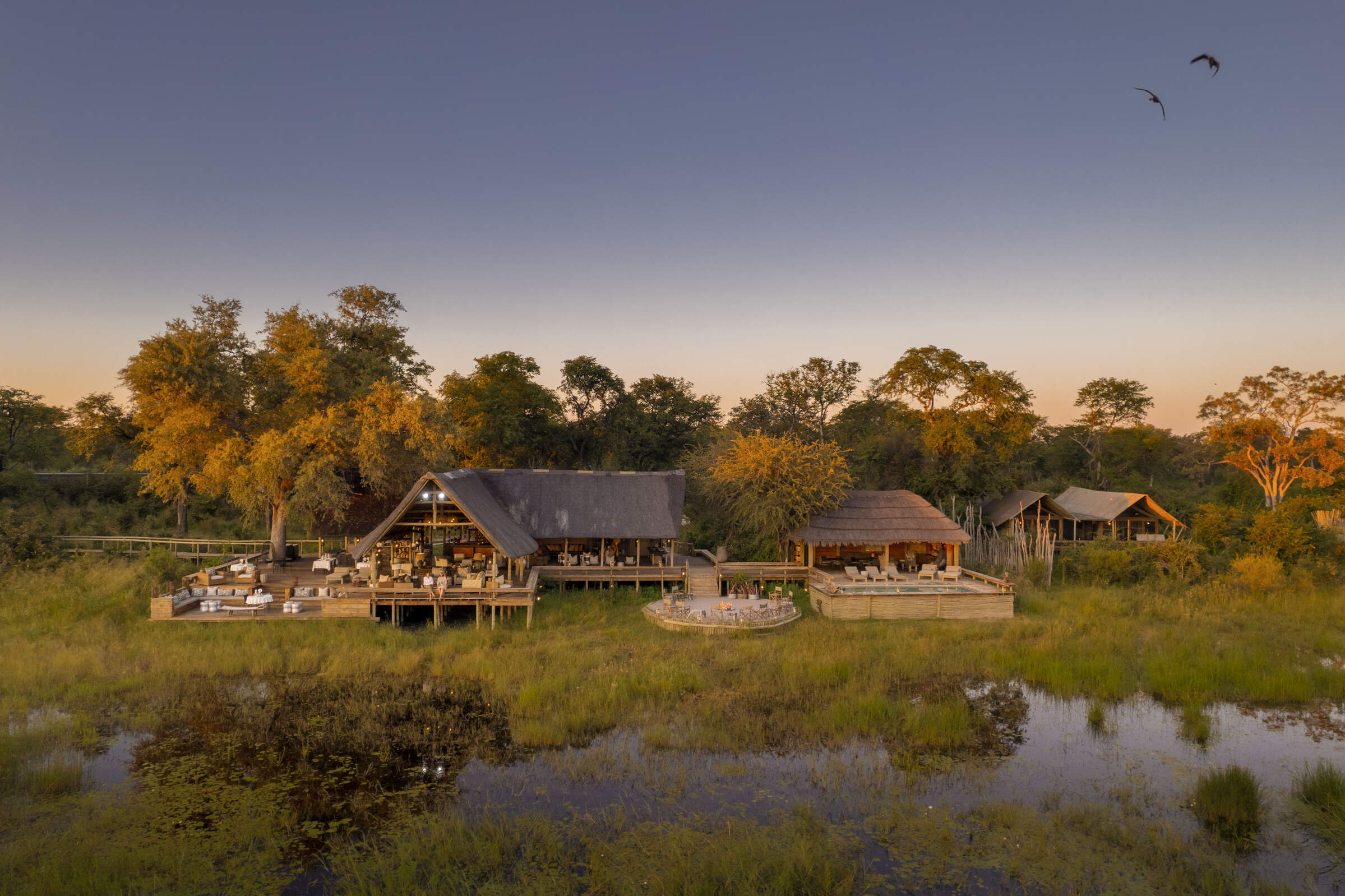
Sable Alley
Smart, independent and well-run, Sable Alley overlooks a beautiful, hippo-filled lagoon within the diverse Khwai Private Reserve.
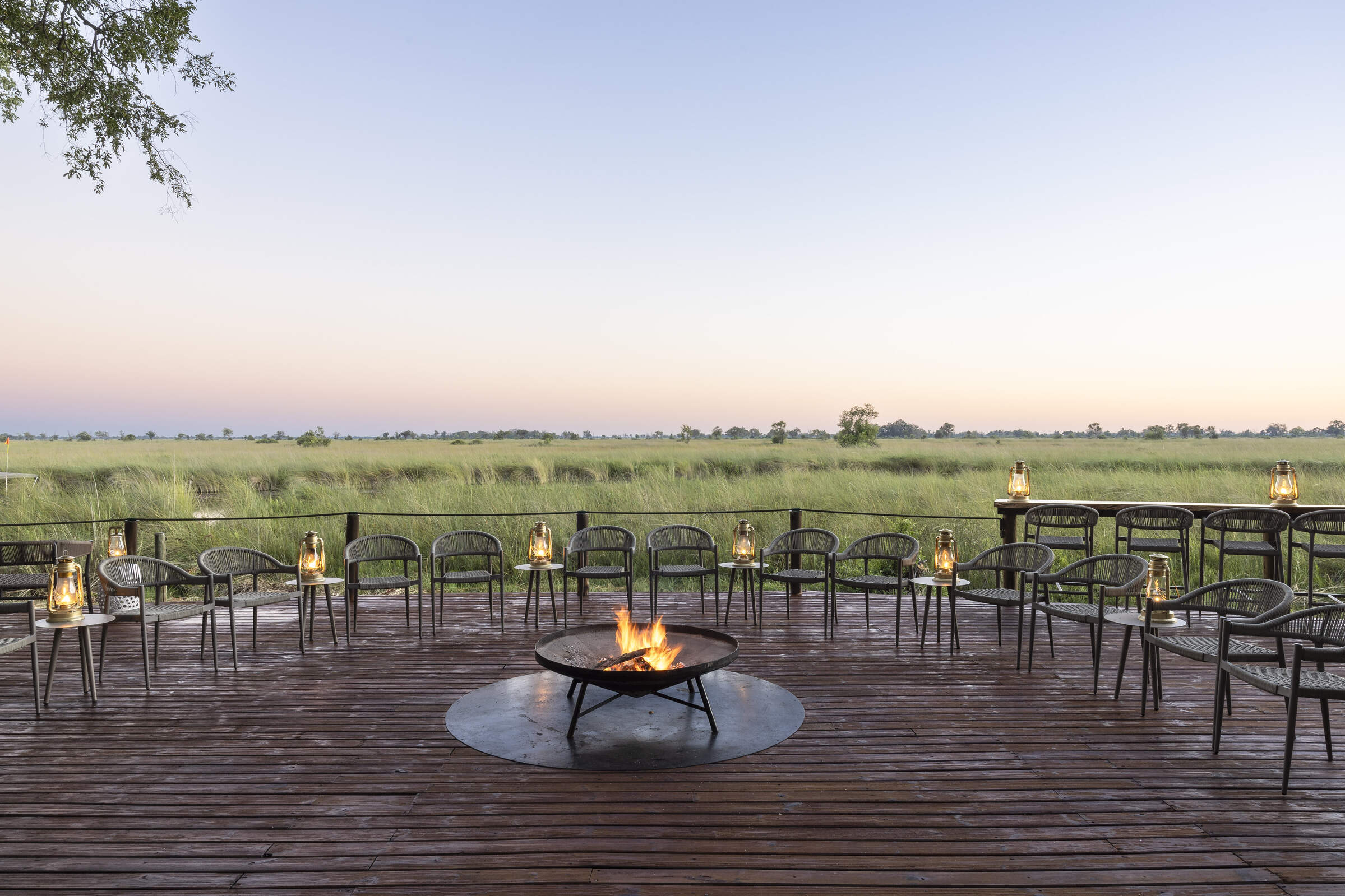
Okuti
With an innovative design and good service, Okuti Camp offers game drives and boat trips in a beautiful, game-rich part of Moremi Game Reserve.
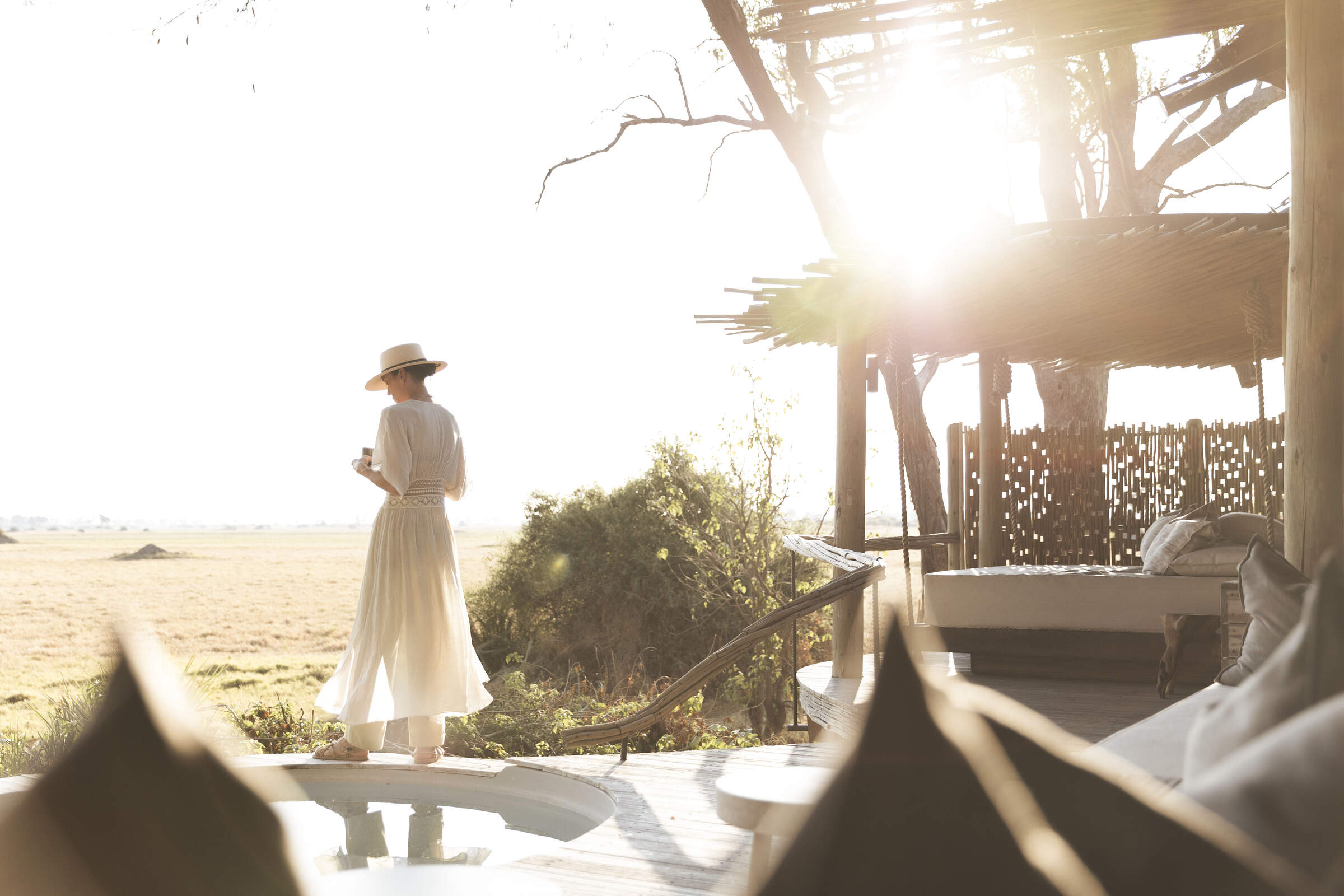
Mombo Camp
Mombo is one of Botswana's most exclusive safari camps, set in a beautiful, remote location within the Moremi Game Reserve and with exceptional game densities.
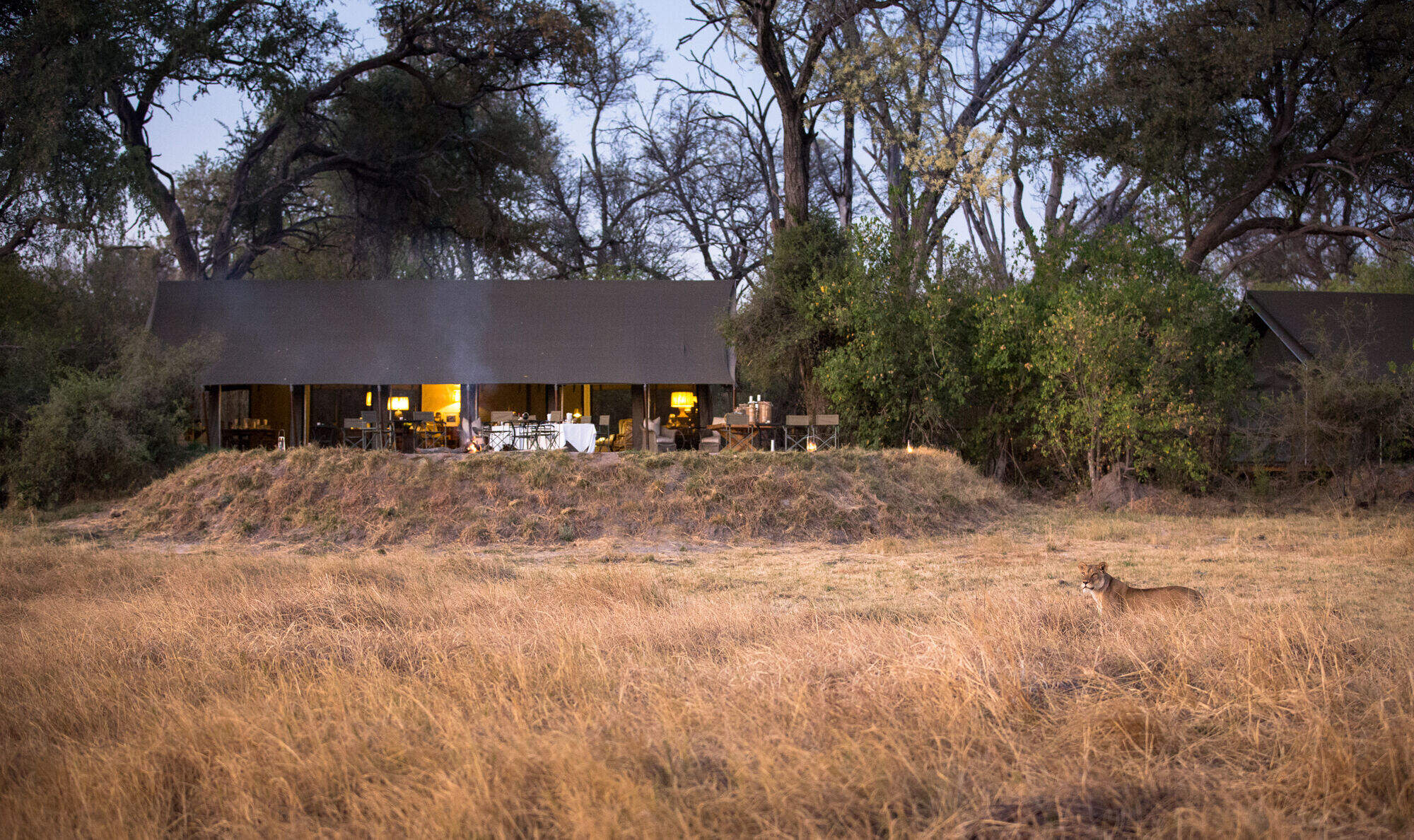
Little Machaba
Overlooking the Khwai River and Moremi Game Reserve beyond, Little Machaba is a classically designed camp with very comfortable tents in a great game-viewing area.
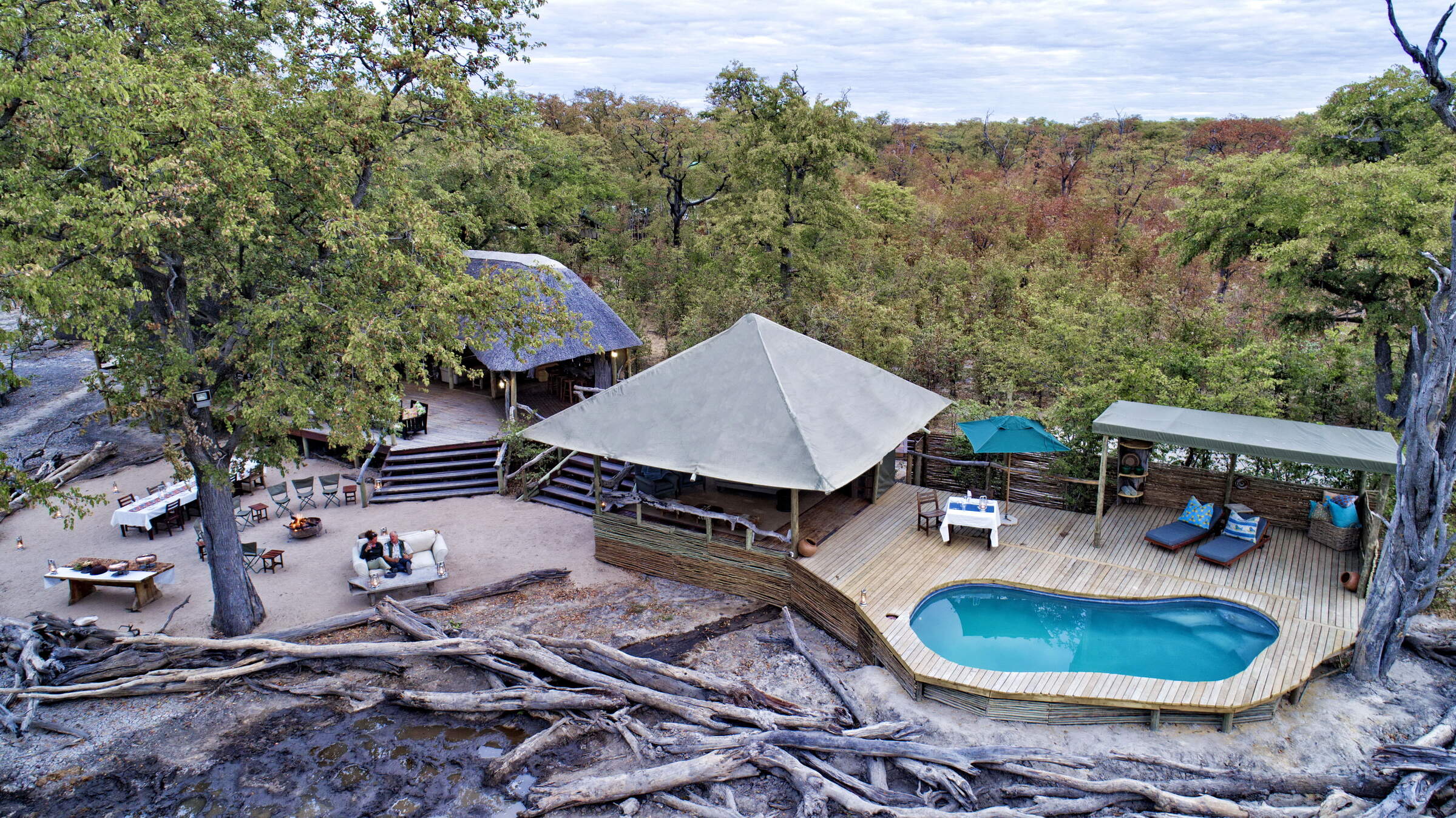
Elephant Pan
Fairly rustic, and relatively inexpensive, Elephant Pan overlooks a natural waterhole that attracts an almost constant parade of animals.
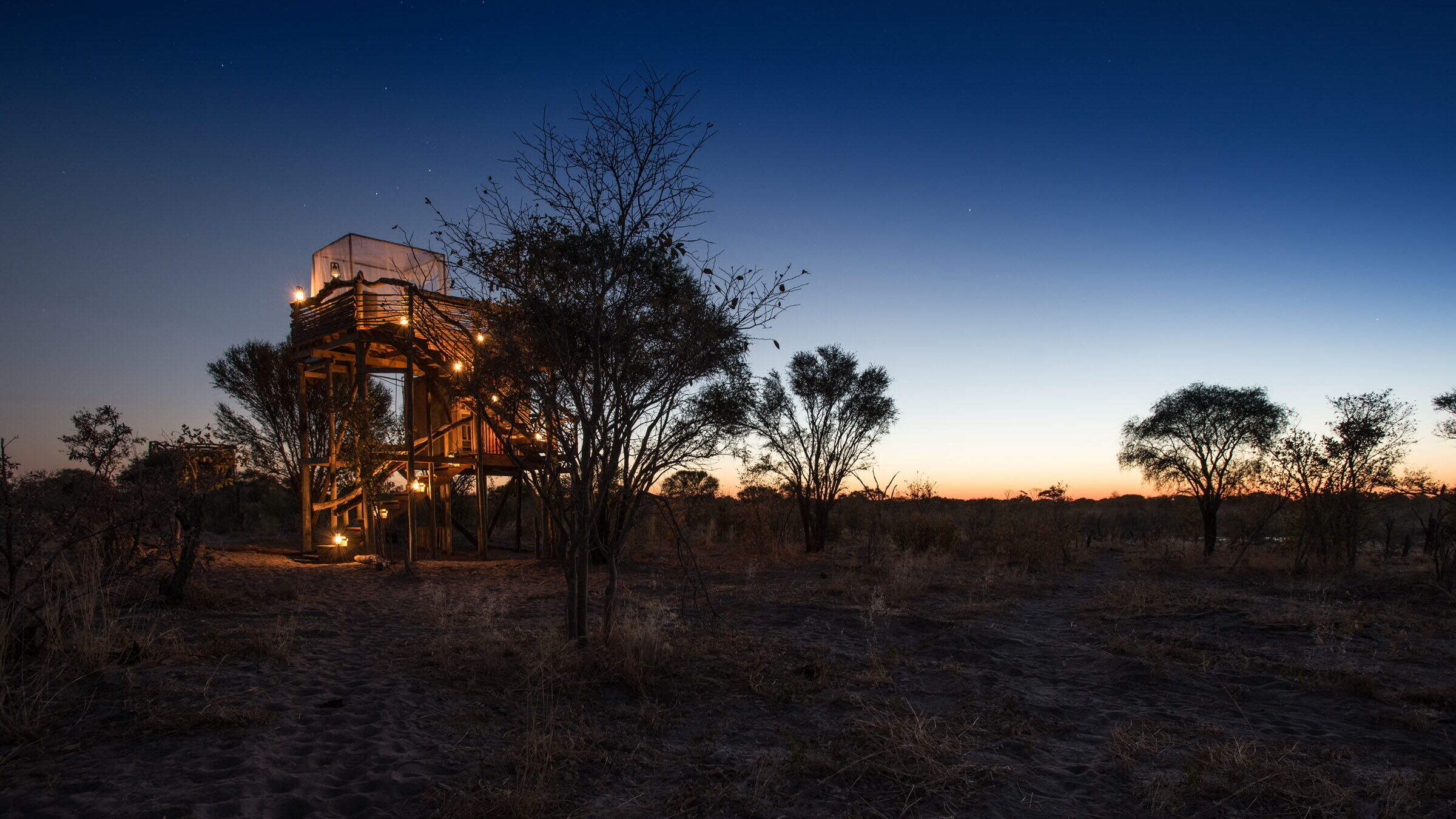
Skybeds
Situated in a private reserve close to Moremi Game Reserve, Skybeds offers a simple yet wonderful opportunity to sleep under the stars and watch wildlife from your bed.
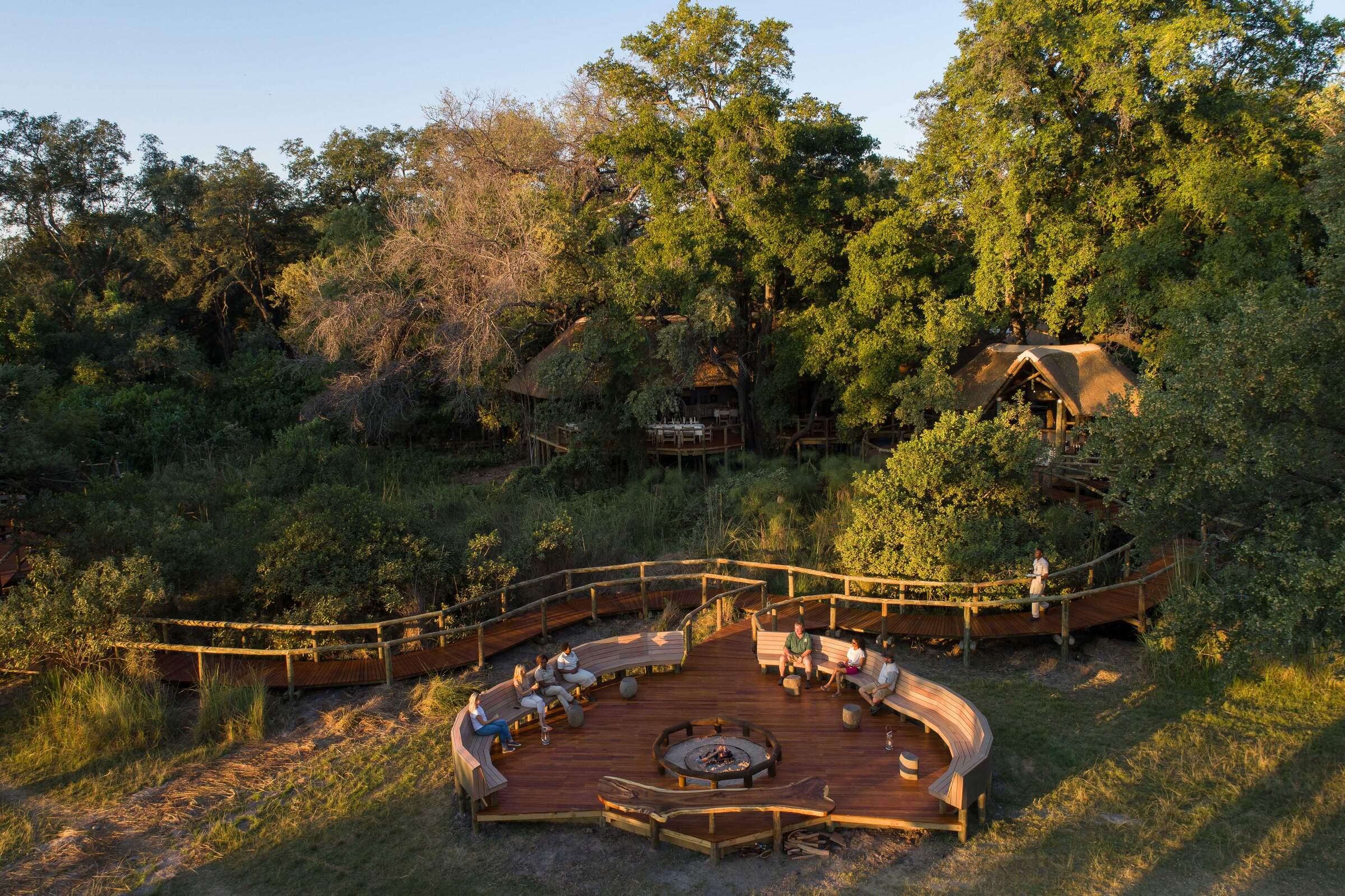
Camp Moremi
In one of the best locations for game viewing in Botswana, Camp Moremi sits at the tip of the Mopane Tongue, overlooking Xakanaxa Lagoon.
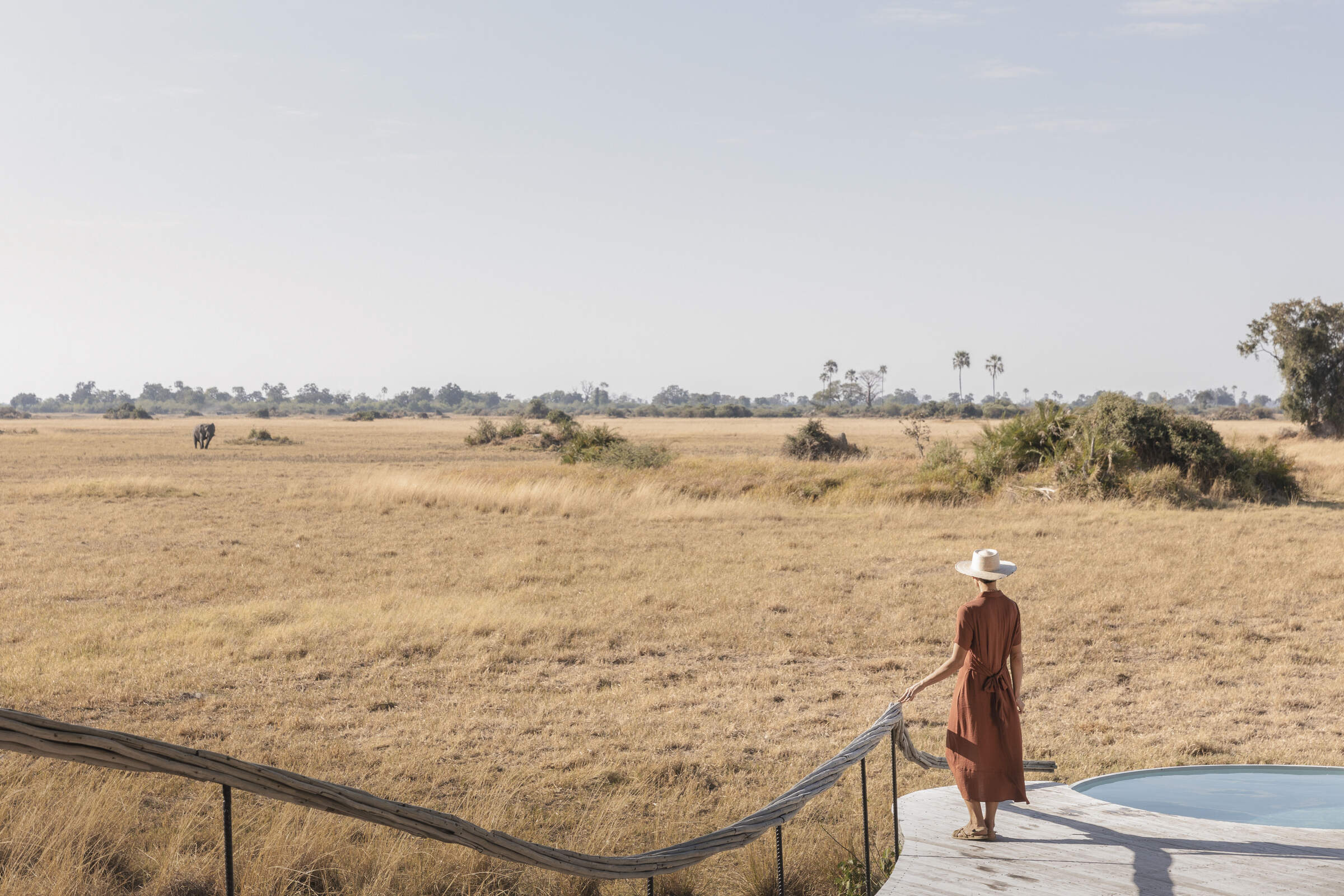
Little Mombo
One of Botswana's top safari camps, Little Mombo stands on the north side of Chief's Island, in the heart of the Okavango Delta's Moremi Game Reserve.
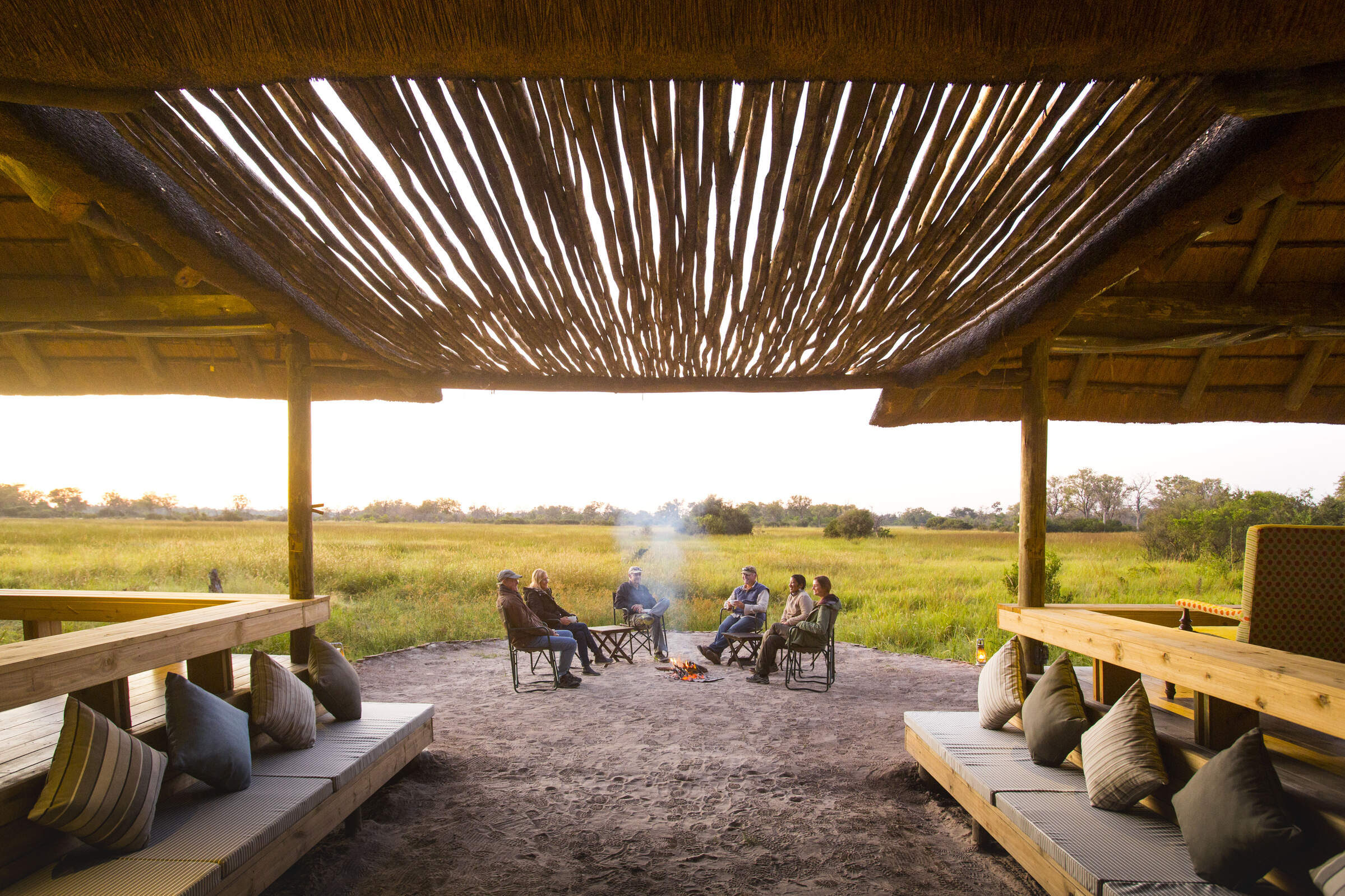
Little Sable
Little Sable camp is located in the Khwai Private Reserve – which borders the Moremi Game Reserve and Chobe
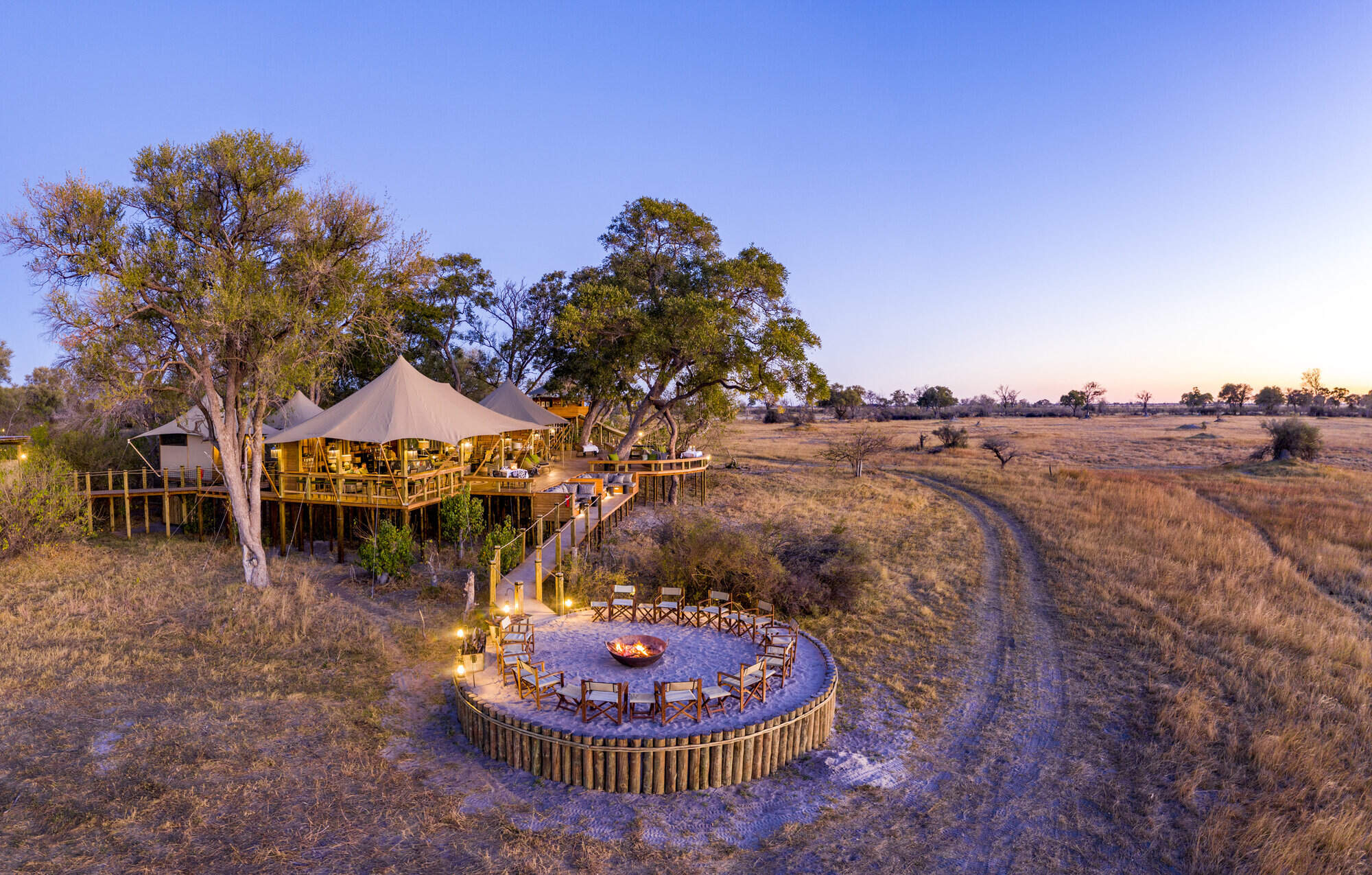
Tuludi
Tuludi is a brand new luxury camp, within the Khwai Private Reserve, built on a site under giant leadwood trees and overlooking the Okavango Delta floodplains.
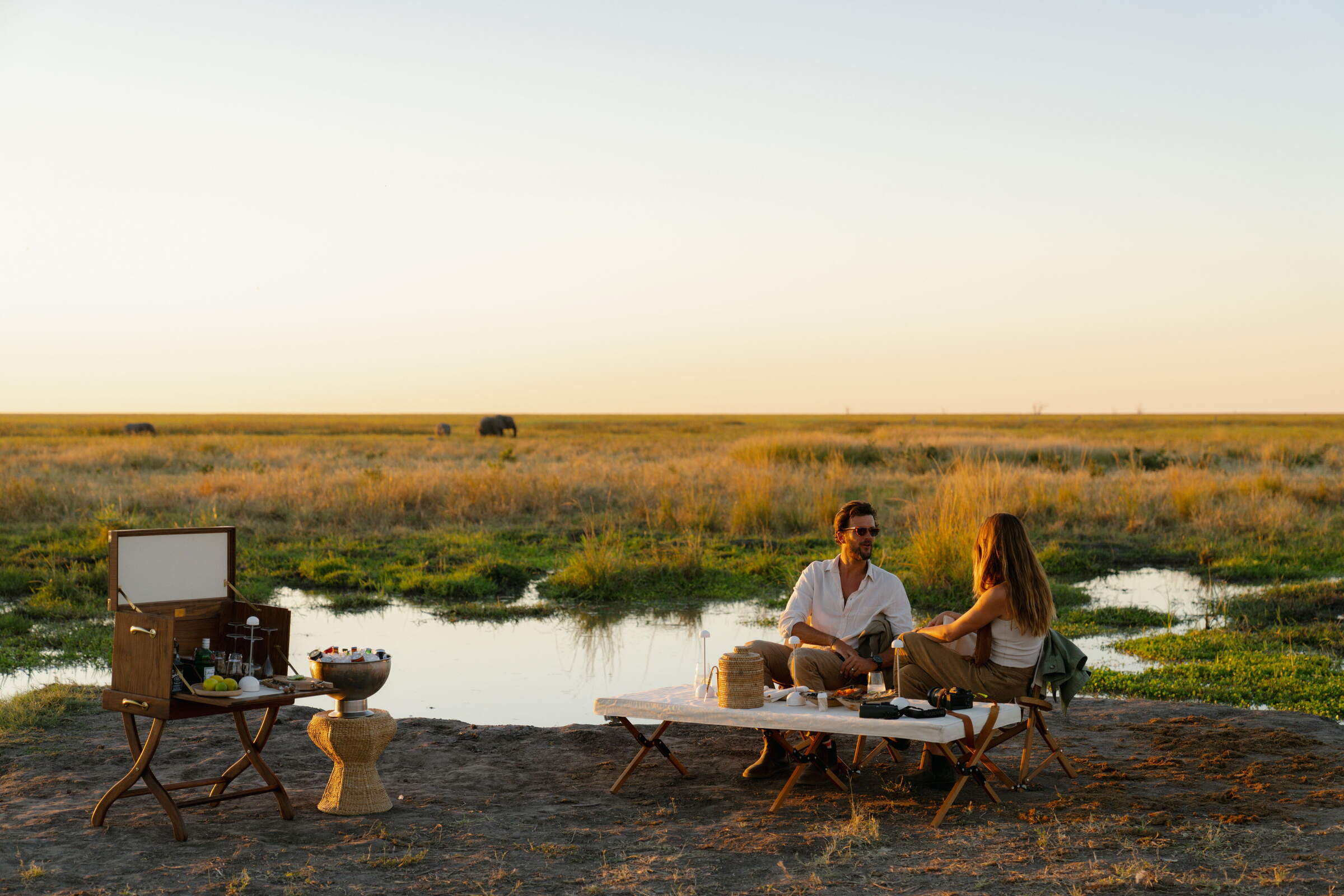
Mokete Camp
New for July 2023, Mokete has 9 luxurious tents, raised on platforms above the surrounding bush and offers an experience of the Kalahari Wilderness.
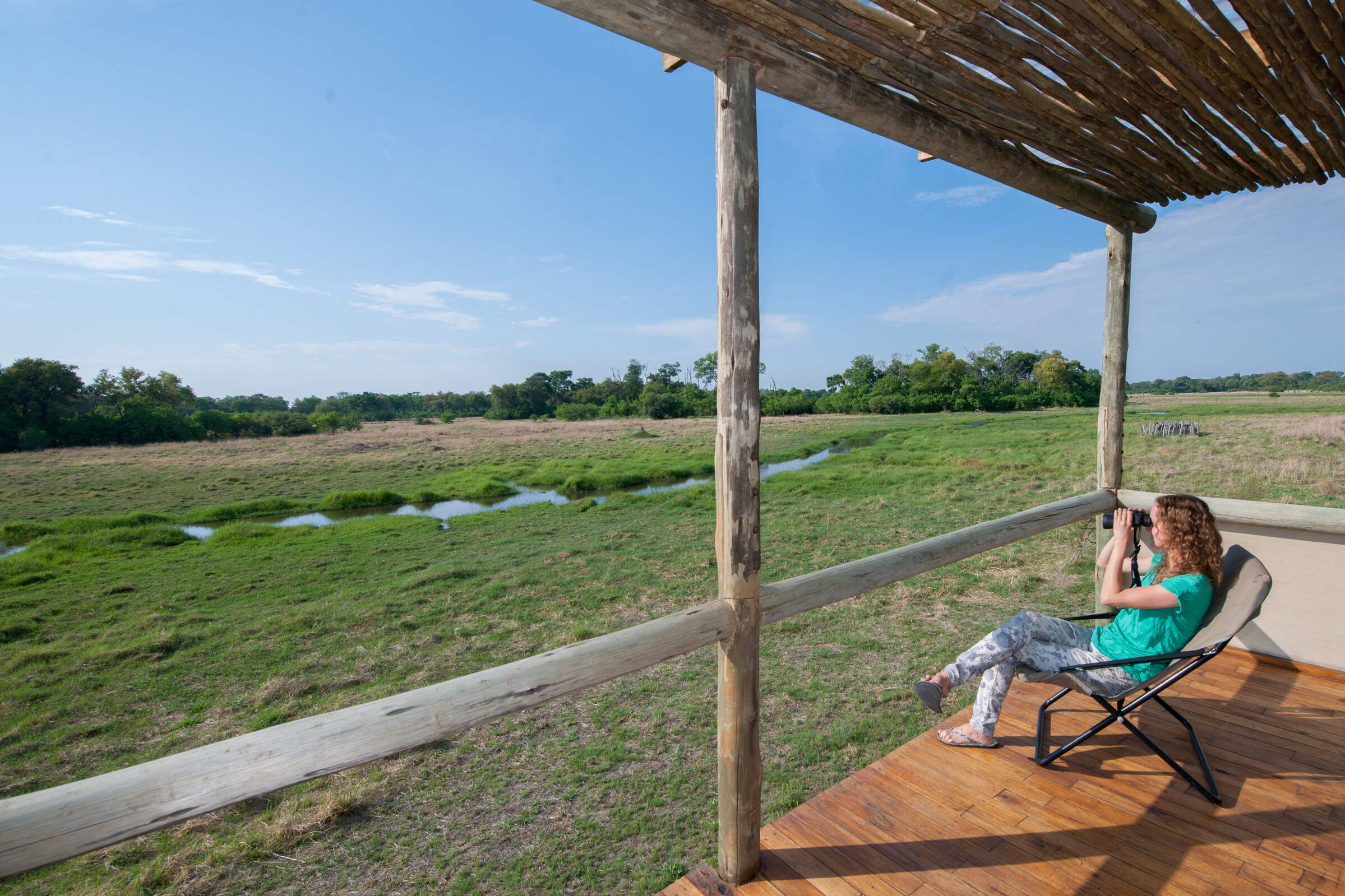
Sango Safari Camp
Sango offers comfortable tented accommodation, without some of the frills often found in Botswana's camps, with an area that's scenic and gets excellent, consistent game sightings.
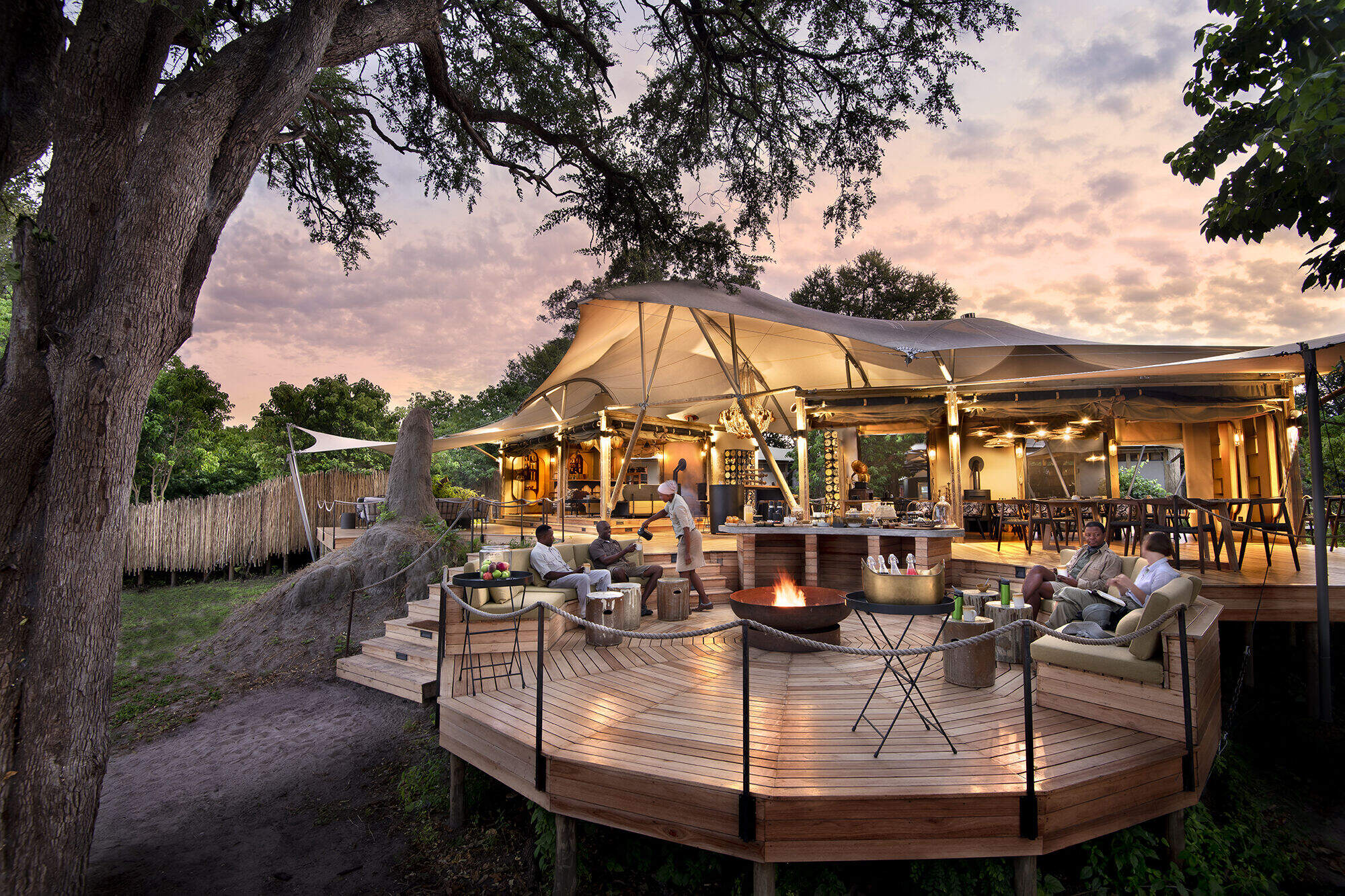
Khwai Leadwood
Khwai Leadwood is a luxurious lodge located in the heart of the Khwai Community Concession, offering guests exceptional service, stunning scenery, and unforgettable wildlife experiences.
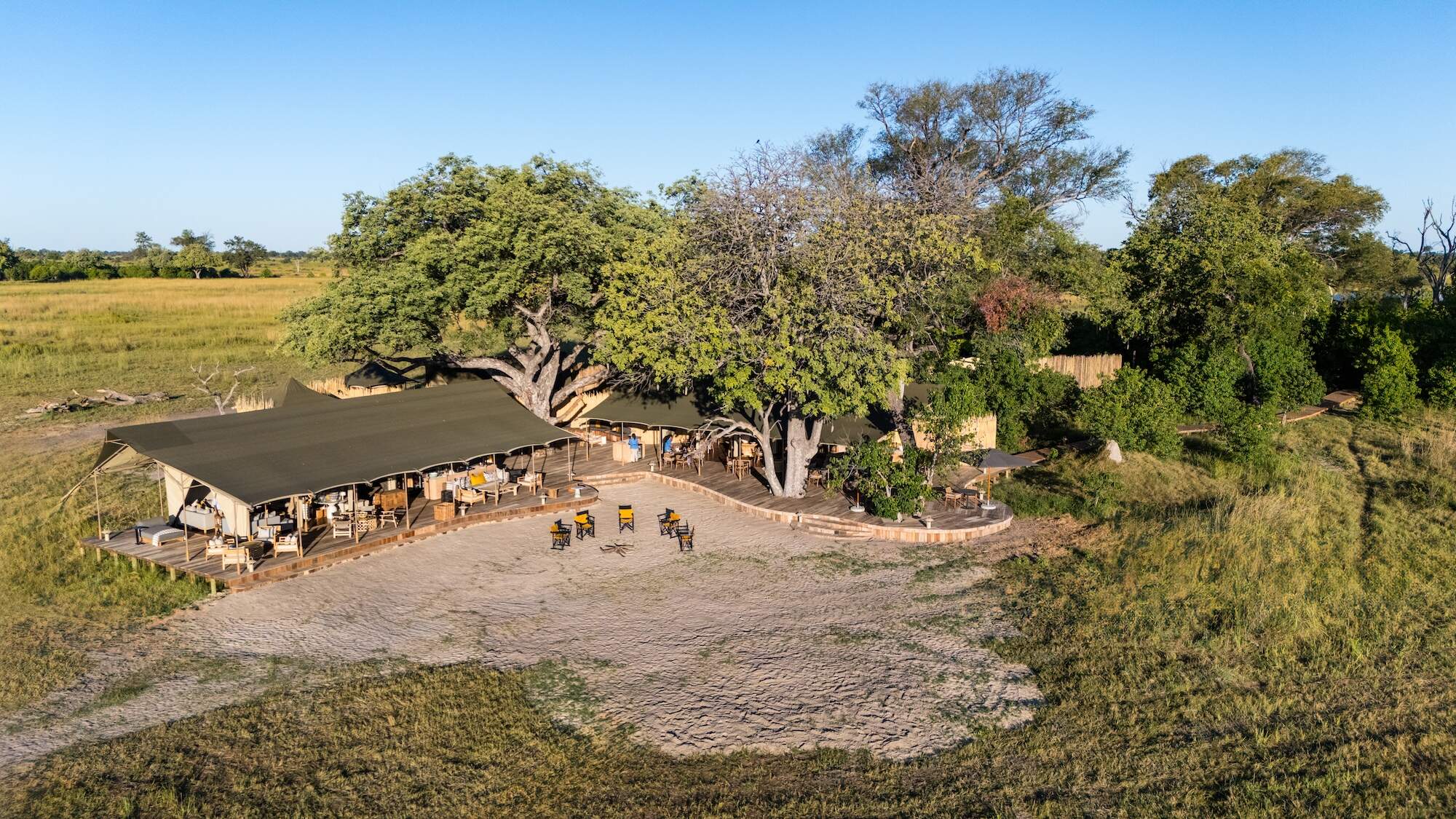
Monachira
Opened in May 2025, Monachira is a stylish lodge in the Okavango Delta with a focus on water-based activities.
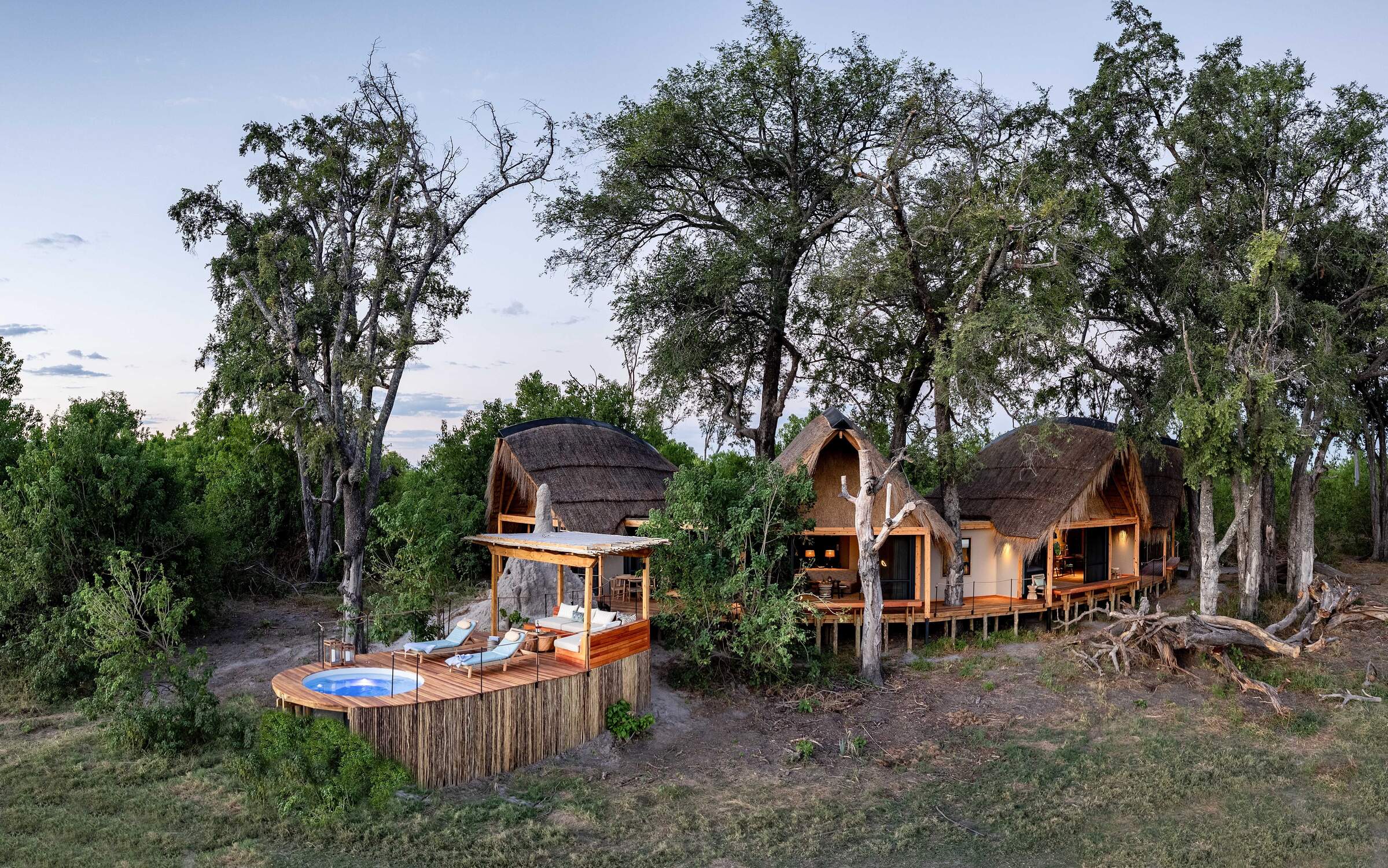
Tawana
An exclusive new lodge on the banks of the Gomoti River, Tawana has just eight very spacious suites.
When to go to Moremi Game Reserve
Our month by month guide: What it's like to visit Chief's Camp in Moremi Game Reserve
Jan
Feb
Mar
Apr
May
Jun
Jul
Aug
Sep
Oct
Nov
Dec
Moremi Game Reserve in January
January is the height of the rainy season in Moremi Game Reserve. Evening showers and occasional thunderstorms cool the air, making temperatures more comfortable than the peak heat of October to December. Wildlife disperses across the landscape, but the Khwai River area still offers good sightings of lions and elephants.
January is also an exceptional time for birdwatching, with migratory species abundant and breeding activity in full swing. The lush greenery creates stunning photographic opportunities, while mokoro excursions allow for tranquil exploration of waterways. Despite the rain, Moremi’s diverse ecosystems, including mopane forests and waterways, offer unique wildlife viewing opportunities. Lower visitor numbers mean better rates at camps and lodges.
- Warm with occasional heavy thunderstorms
- Spectacular birdlife throughout the reserve
- Wildlife dispersed in the floodplains and woodlands
- Good availability in camps and lodges
Our view
A good time to visit, with pros & cons
Weather in January
Moremi Game Reserve in February
February in Moremi Game Reserve sees the wet season continue, with heavy evening rains and cooling temperatures. The reserve is green and vibrant, alive with insects, smaller animals, and many animals are raising their young. The Xakanaxa Lagoon area is particularly rich in wildlife diversity at this time.
While thicker vegetation makes spotting larger animals more challenging, patient observers may encounter leopards or antelope species. Birdwatching remains a highlight, with over 500 species, including many in colourful breeding plumage. High water levels make boat trips a wonderful way to explore the intricate waterways of the Delta. Visitor numbers are low, offering a more intimate safari experience and better availability at luxury camps.
- Warm temperatures with some thunderstorms
- Abundant birdlife, including breeding species
- Wildlife raising young across the reserve
- Game viewing improving in central areas
- Low visitor numbers and good camp availability
Our view
This is not a great time to visit
Weather in February
Moremi Game Reserve in March
March marks the end of the rainy season, with fewer storms and more sunny days. The landscape remains lush, and wildlife activity increases as animals finish raising their young. This is an ideal time for photography, with the green scenery providing dramatic backdrops.
While thick vegetation can still make wildlife spotting challenging, patient observers may be rewarded with sightings of predators like lions and leopards, especially in the Khwai River area. Birdwatching continues to be exceptional, with many migratory species still present. Water-based activities like boat cruises offer unique perspectives on the delta's wildlife. With fewer visitors, March provides a quieter, more exclusive safari experience in Moremi’s mopane forests to expansive floodplains.
- Variable weather, rains easing off with occasional thunderstorms
- Many animals finishing raising their young
- Excellent birdwatching and photography opportunities
- Few visitors and lower rates in camps
Our view
A good time to visit, with pros & cons
Weather in March
Moremi Game Reserve in April
April in Moremi Game Reserve typically signals the end of the rainy season, with clearer skies and a vibrant green landscape. Night temperatures begin to drop, particularly in the southern areas of the reserve. Game viewing improves as vegetation starts to thin, making it easier to spot wildlife. This is also an excellent time for boat excursions, offering intimate encounters with aquatic wildlife and bird species.
Birdwatching remains highly rewarding, with many species still nesting or breeding. The Xakanaxa Lagoon area is especially rich in wildlife diversity during this period. With the shoulder season underway, visitors can enjoy better value at top camps. April strikes a wonderful balance of pleasant weather, diverse wildlife sightings, and fewer tourists.
- Cooler evenings with occasional showers
- Lush green landscapes after the rains
- Improved predator-prey interactions
- Quiet period with relatively low rates
- Water levels rising - ideal for boat safaris
Our view
A good time to visit, with pros & cons
Weather in April
Moremi Game Reserve in May
May is one of the best months to visit Moremi Game Reserve. The annual floodwaters from Angola start to reach the Delta, creating ideal conditions for water-based safaris. Cooler mornings and evenings heighten predator activity, although tall grasses in some areas may still obstruct views.
The Khwai River and Chief’s Island are prime locations for spotting large herds of elephants and buffalo. Birdwatching remains excellent, with over 500 species recorded in the reserve. May is perfect for combining game drives and boat excursions, offering a diverse and rewarding safari experience. Clear, crisp evenings also provide outstanding stargazing opportunities. As shoulder season ends, value-conscious travellers should book early to secure availability at camps and lodges before peak rates apply.
- Cool mornings and evenings with little rain
- Game viewing improves as grasses thin
- Increased predator activity in the reserve
- Final month of shoulder season - rates still reasonable
- Availability becomes limited as demand rises
Our view
A very good time to visit
Weather in May
Moremi Game Reserve in June
June marks the start of the dry season in Moremi Game Reserve. Mornings and evenings are cool, sometimes reaching freezing at night, while daytime temperatures rise to 25-30°C/77-86°F with clear skies. The air clarity is excellent for photography. As surface water diminishes, wildlife starts to congregate around remaining water sources.
Game viewing improves significantly throughout Moremi, but especially in the Khwai River area and around Xakanaxa Lagoon. June is perfect for night drives, which are possible in areas outside the reserve. Birdwatching remains excellent, with many water birds concentrated around permanent water bodies. With peak season approaching, many camps and lodges are becoming much busier and so booking well in advance is wise.
- Warm days, cold nights in Moremi
- Excellent conditions for wildlife photography
- Animals congregating around water sources
- Vegetation thinning, improving visibility
- Peak season starts, rates increase
Our view
Fantastic: the very best time to visit
Weather in June
Moremi Game Reserve in July
July in Moremi Game Reserve offers cool mornings and evenings, combined with excellent game viewing. The thinning vegetation and concentration of wildlife around water sources make this one of the best months for safari experiences. The Khwai River area and Chief's Island are particularly rewarding, with high chances of spotting big cats and large herds of elephants and buffalo.
Water-based activities like motorboat cruises on the permanent waterways provide unique wildlife viewing perspectives. Birdwatching remains excellent, with large concentrations of water birds. July is ideal for photography, with clear skies and animals gathering at waterholes. Night drives offer opportunities to spot nocturnal species.
- Comfortable days, cold nights in the reserve
- Excellent game viewing as vegetation recedes
- Khwai area becomes busy with visitors
- Private concessions offer exclusive experiences
- Peak season with high rates in most camps
Our view
Fantastic: the very best time to visit
Weather in July
Moremi Game Reserve in August
August is a popular time to visit Moremi Game Reserve, coinciding with peak safari season. Temperatures are generally cold at night and comfortable during the day, rising towards month-end. Wildlife congregates around remaining water sources, making game viewing exceptional.
The Khwai River area offers excellent predator sightings, though can be very busy with travellers. August is one of the best times to experience the delta floods at their peak, ideal for boating safaris. Birdwatching is rewarding, with large concentrations of water birds. The clear, dry conditions create spectacular sunsets and stargazing opportunities.
- Dry, warm days and cool nights in Moremi
- Fantastic wildlife watching, especially in the Delta
- Okavango flood waters typically at their peak
- Stargazing opportunities on clear nights
- High rates and limited availability in camps
Our view
Fantastic: the very best time to visit
Weather in August
Moremi Game Reserve in September
September in Moremi Game Reserve sees warming daytime temperatures while nights remain cool. The dry conditions create a hazy atmosphere, resulting in stunning sunsets. Game viewing is excellent, with large numbers of elephants and buffalo congregating in the Khwai River area and around Xakanaxa Lagoon. Predator sightings are frequent, especially around water sources.
September is ideal for walking safaris and night drives, offering unique wildlife encounters outside the borders of the reserve. Birdwatching remains rewarding, with migrant birds beginning to return. Water-based activities provide close encounters with aquatic wildlife whilst the clear night skies offer excellent stargazing opportunities.
- Warmer days, cool nights in the reserve
- Prime month for wildlife viewing in Moremi
- Large elephant herds visible near water
- Hazy conditions create dramatic sunsets
- Peak season rates, many lodges fully booked
Our view
Fantastic: the very best time to visit
Weather in September
Moremi Game Reserve in October
October is one of the hottest and driest months in Moremi Game Reserve. The lack of water and vegetation results in excellent big-game viewing, particularly around the remaining water sources. Water levels are lower, limiting some water-based activities, but concentrating wildlife for easier viewing.
October is excellent for walking safaris and night drives, both possible outside the park, which provide unique perspectives on the Okavango’s ecosystems. Birdwatching remains rewarding, with many migrant species arriving. The dry, hazy conditions create dramatic landscapes and stunning sunsets, ideal for photography. The most luxury provide comfortable and cool bases for exploring the reserve during this intense wildlife period.
- Hot days, chance of rain late in the month
- Excellent big game viewing opportunities
- Water activities limited as flood waters recede
- Last month of peak season in Moremi camps
- Migratory birds begin to arrive in the reserve
Our view
Fantastic: the very best time to visit
Weather in October
Moremi Game Reserve in November
November usually marks the end of the dry season in Moremi Game Reserve, with increasing temperatures and humidity often culminating in the first rains. These short, heavy showers bring a flush of green to the landscapes. Wildlife begins to disperse as water becomes more available, but game viewing still remains very good.
November is fantastic for birdwatching, with the arrival of many migrant species. The first rains create spectacular skyscapes and rainbows, offering unique photographic opportunities. Water levels start to rise, gradually improving conditions for mokoro excursions. The prices at luxury camps reduce to shoulder-season levels, offering bargains for value-conscious travellers wanting to balance of wildlife viewing and comfort.
- Hot days, sometimes humid in Moremi
- Increasing likelihood of rain as month progresses
- Wildlife less concentrated but still good viewing
- Arrival of migratory birds enhances birdwatching
- Shoulder season begins, rates become lower
Our view
A good time to visit, with pros & cons
Weather in November
Moremi Game Reserve in December
December in Moremi Game Reserve sees the continuation of the rainy season, bringing some relief to the high temperatures. While game viewing becomes more challenging as wildlife disperses, great sightings can still be had in key areas. The landscape transforms with lush vegetation, creating beautiful scenery. December is excellent for birdwatching, with migratory birds in full attendance and many species breeding.
The rejuvenated waterways enhance boat safari experiences, offering unique perspectives on the Delta's ecosystem. Afternoon thunderstorms create dramatic skies, perfect for landscape photography. Luxury camps offer lower season rates, providing excellent value for experiencing Moremi's diverse wildlife and stunning landscapes during this vibrant time of year.
- Temperatures cooling from October-November highs
- High chance of rain, usually short heavy storms
- Birds in breeding plumage and often including migrants
- Wildlife more dispersed
- Low-season rates available in most camps
Our view
A good time to visit, with pros & cons
Weather in December

Looking for inspiration on where to travel next?
Visit our trip chooser to explore your options and find inspiration for your perfect African adventure
Inspire me